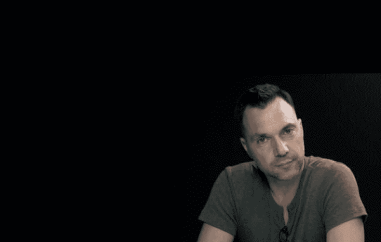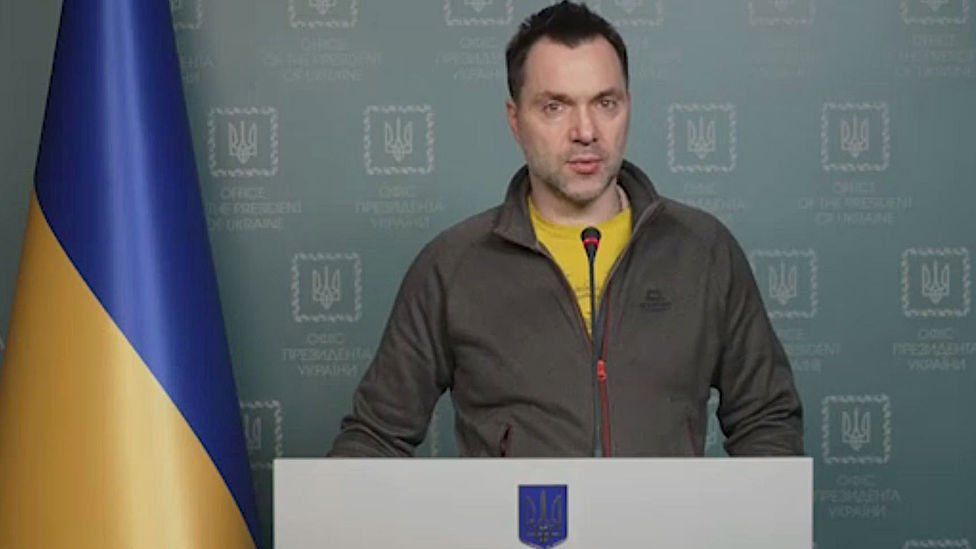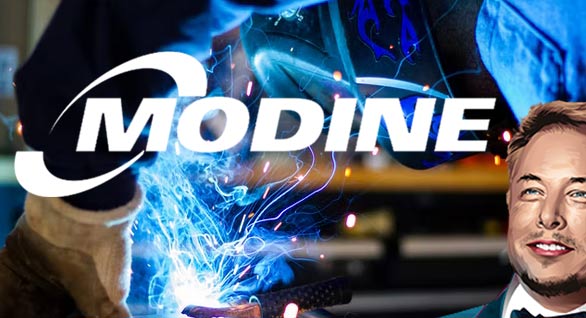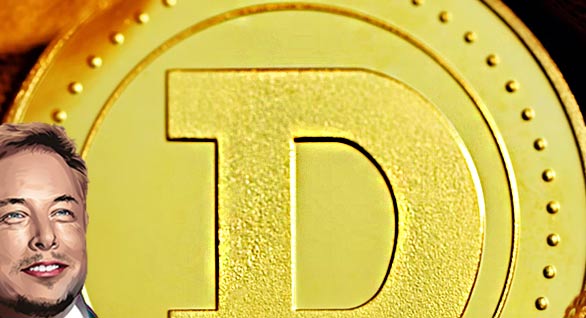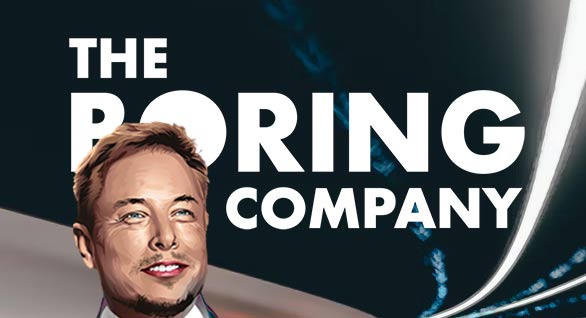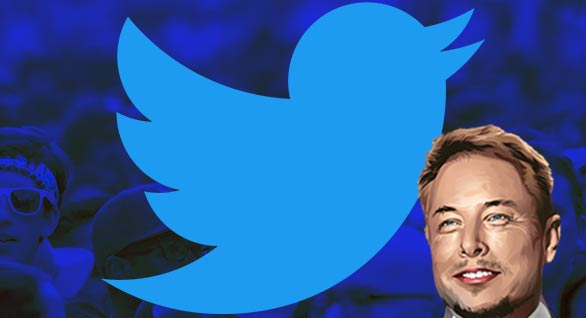As we reported long ago, the powers that be abandoned the original EU plans. I suspected then that their next move will be the Intermarium scenario, but I had no solid confirmation.
Until just now, when insider sources confirmed the plan is ongoing as we speak and it’s fully backed by the forces behind the US of A. Deadlone: 2032 the latest.
UPDATE APRIL 30, 2023:
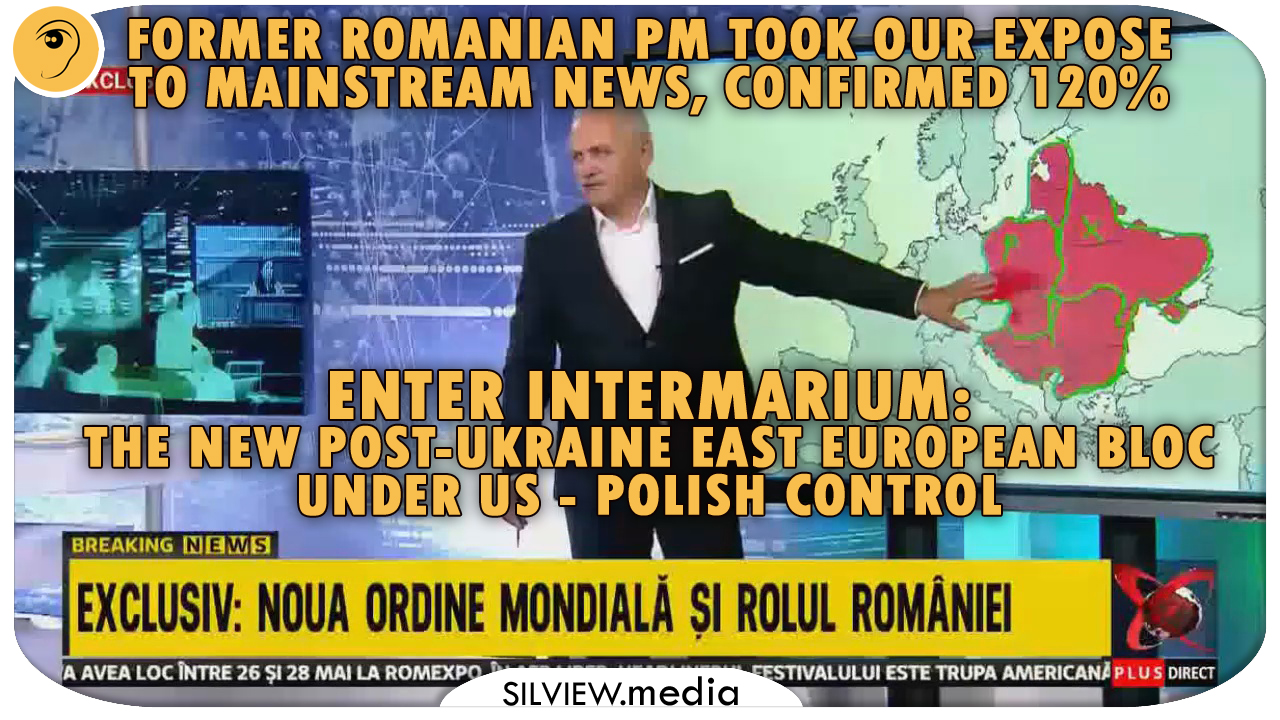
Ten another guest outed him to be in the know of thins for over 10 years, since he was a prime-minister, and never whispering a word about it. It was simply spectacular!
now back to the original program:
While accusing Russia of revamping its imperialist ambitions, Poland backed by US, was doing just that, pursuing an old inter-generational plan known as Intermarium: A Central and Eastern-European Commonwealth, separated from EU.
Why the US is breaking up EU to build Intermarium, the Polish imperial dream – G. Friedman:
Why the plan for a Polish empire is reemerging now with US support – Center for Intermarium Studies:
INTERMARIUM: The Most Dangerous Geopolitical Chess Game On Planet Earth
Posted on June 7, 2016 by State of the Nation
A Nobel Peace Prize winner is used to wage war against Russia
Who is really behind all the relentless warmongering?
SOTN Editor’s Note:
Nobel Peace Prize winner Barack Obama has continued his war-making ways. Not only was he used by his masters to restart the Cold War with Russia, he has disrespectfully turned down every Russian gesture toward vital dialogue.
The truth of the matter is that Russia is the country that is being systematically encircled by the USA and NATO. President Putin has every right to reject this encirclement of military buildup on it’s very borders. The Kremlin’s response to the Western warmongering initiatives has been extraordinarily muted and subdued in light of the implicit aggression.
Obama Administration Won’t Stop Antagonizing Russia
However, the real question is: Who is really behind all the relentless warmongering against Russia? The answer can be found at the following two extremely important articles. Only by correctly understanding the relevant history will the present be comprehensible. Only by understanding the present can the future be accurately deciphered.
STRATFOR Chief Reveals Zio-Anglo-American Plot For World Domination
Zio-Anglo-American Plot to subjugate Russia via World War III focused on the Intermarium
As the article posted below clearly indicates, Putin’s Russia is now under grave threat by American missiles and NATO military buildup. Putin’s team in the Kremlin, it seems, has yet to get the message that JFK received by a similar missile positioning scheme which occurred in Cuba in the early 1960s (aka the Cuban Missile Crisis). Kennedy acted decisively and the threat was removed expeditiously. Putin must now act decisively … before it’s too late. Putin et al. must also understand that:
THERE IS ONLY ONE WAY TO EFFECTIVELY DEAL WITH A CRIMINALLY INSANE PSYCHOPATH—YOU DON’T!
STRATFOR Chief Reveals Zio-Anglo-American Plot For World Domination
Posted on September 11, 2015 by State of the Nation
Why the Anglo-American Axis is so determined to wage war against Russia
Global Geopolitical Chessboard:
Psychopathic Players and Cynical Moves
Guarantee a Future of Perpetual War
>>>>>>>>>>>>>>>>>>>>>>>>>>>>>>>>>>>>>>>>>>>>>>>>>>>>>>>>>>>>>>>>>>>>>>>>>>
Explosive presentation hosted by the Chicago Council on Global Affairs
reveals what no government official, no political representative, no NGO
executive and no think tank director has ever said before in public.
<<<<<<<<<<<<<<<<<<<<<<<<<<<<<<<<<<<<<<<<<<<<<<<<<<<<<<<<<<<<<<<<<<<<<<<<<<
“From the Black Sea to the Baltic”
STRATFOR Founder George Friedman Expresses the Profound Flaws and Extreme Hubris of American Exceptionalism and U.S. Foreign Policy
The preceding map of Eastern Europe and Western Asia represents the most active part of the current global geopolitical chessboard. The few colored lines illustrate the very essence of the Anglo-American geopolitical strategy to maintain world domination and global economic control. This map was shown as a slide at a critical speech given by STRATFOR founder George Friedman. It was taken as a screenshot in case the exceedingly volatile and incriminating video is removed from the internet.
George Friedman presented his speech to the Chicago Council on Global Affairs on February 4th, 2015, which was then followed by a quite telling Q&A period. There is perhaps no other public presentation ever recorded that has so clearly delineated the militaristic geopolitical agenda of the British-American Empire. Friedman explains with extraordinary candor and unusual detail the manner in which the Western powers have set up the global chessboard to their (Anglo-American Axis) seemingly never-ending advantage. Of course, it is the Russian Federation that is, once again, on the losing side of this Great Game … in the words of George Friedman.
According to the neocon narrative, Germany sits squarely, once again, in the middle of the two superpowers — the USA and Russia. German destiny has put the nation in the position to literally determine the future fate of the world. The last century saw two very graphic examples of the same dramatic geopolitical dynamic. Both World Wars I and II put the same three power-players on full display.
Now, fast forward to 2015 and the civil war in the Ukraine and bankruptcy of Greece. Both have occurred alongside the greatest immigration crisis in European history as the European chessboard is being fastidiously set up. What is especially crucial at this very moment is Germany’s rapidly evolving position and movement on the board. The whole world watches and waits to witness the next moves that Chancellor Angela Merkel will make. The current status of this highly consequential geopolitical chess match is further depicted by the map below.
______________________________________________________________
For those who are uninitiated in the history and arcana of the Great Game, it is not from New York City or Washington D.C. that the moves are made today on this centuries-old geopolitical chessboard, it is Chicago. Both Leo Strauss and Milton Friedman made the University of Chicago their academic home. Leo Strauss, the Father of Neoconservatism, was the political philosopher who spawned an underground movement that has aggressively used the U.S. Military-Industrial Complex to create a de facto American Empire, sometimes promoted as Pax Americana. Milton Friedman provided the foundational blueprint for the necessary political economy which would support such a perpetual war economy. Chicago is where the real action is, especially because of the immigration hub that it has always been for highly educated eastern and central European immigrants, as well as disaffected Russian intellectuals and oligarch wannabes. The prime objective of this ‘Great Game’ has always been to strip Russia of its wealth and exploit every natural resource from Saint Petersburg to the Kamchatka Peninsula.
______________________________________________________________
Chicago: U.S. Headquarters of the NWO Zionist Neocon cabal
Herein lies the real problem. There has long been a network of Eastern Europeans who have harbored an inveterate hatred toward all things Russian. This hatred is at once irrational, intense and without any substantive basis. These lifelong Russophobes have been plotting against the Russian Motherland for decades; their ancestors had likewise conspired over the centuries. Toward that end they have enlisted a whole host of nations which comprise an unspoken alliance known as the Anglo-American Axis (see glossary) which has been and is now arrayed against Russia and her allies. In the USA many of these Russophobes hail from Chicago as the University of Chicago has been used as their academic headquarters for decades.
That President Barack Obama (who hails from Chicago) is surrounded by the same jaded characters is quite problematic. It fully explains why a Nobel Peace Prize winner would go out of his way to antagonize Russia and restart the Cold War. George Soros (originally from Hungary) funded both of Obama’s presidential campaigns while Zbigniew Brzezinski (originally from Poland) functioned as his primary foreign policy advisor. He has also appointed a whole slew of neocon operatives and Chicago politicos to key positions throughout both of his Administrations.
For example, feisty Mayor of Chicago Rahm Emmanuel of Jewish Romanian ancestry was Obama’s first Chief of Staff. Penny Pritzker, whose Jewish family founded Hyatt Hotels and originally emigrated from Kiev, Ukraine, was national finance chair of Obama’s 2008 presidential campaign. Chicago attorney and Obama political consultant David Axelrod’s father was a Jewish immigrant who escaped the pogroms in Eastern Europe. Even Obama’s community organizing past was heavily influenced by the deceased Saul Alinsky, a community organizer from Chicago whose Jewish family immigrated from Russia.
Then there is the current First Family of Neoconservatism, Assistant Secretary of State Victoria Nuland and her husband Robert Kagan. Victoria’s father, Shepsel Ber Nudelman, was born to immigrant Russian Jewish parents Meyer and Vitsche Nudelman. Needless to say, Victoria “F**K the EU” does not present the necessary diplomacy to function as the Assistant Secretary of State for European and Eurasian Affairs. She will also be forever remembered for singlehandedly restarting the Cold War by hand-delivering cookies and cupcakes to virulent anti-Russian Ukrainians executing a CIA-coordinated coup in Kiev’s Maidan Square which led to the ongoing civil war. Victoria Nuland’s family ties: The Permanent Government in action
The two key figures behind the unrivaled campaign chests amassed by Obama prior to both of his presidential elections were George Soros and Zbigniew Brzezinski. Only by understanding the true forces behind these two characters will the current war against Russia be properly understood. Suffice to say, that both individuals harbor an intense and irrational hatred toward Russia, as do all of their Cold Warrior co-conspirators who have colluded to collapse the Russian state.
(Source: Anglo-American Axis Wages Financial/Economic War Against Russia)
Those central and eastern European émigrés who came to America were mostly liberal, urban intelligentsia who once lived within the Russian orbit. Because of their shared Russophobic sentiments, they naturally bonded together in common cause to bring down Russia, which they did once by way of their carefully planned Bolshevik Revolution. The ‘Russian Revolution’ actually had very little to do with indigenous Russians, and a lot to do with this rogue group of European Russophobes. The Bolshevik Revolution was in fact conceived and manufactured, financed and promoted in both New York City and the City of London. Without American war financing and British military intelligence, the Soviet Union would never have been established.
*Russophobia in this particular context was quite purposefully manufactured (as in Made in the USA) over generations as a ruse to justify the exploitation of the Russian Motherland. By fabricating fear toward the “Russian Bear”, it is easy to marshal worldwide opinion against her. Friedman refers to how ‘scary’ a strong Russia would be, especially when closely allied with Germany.
The original group of hardened Russophobes was primarily Jewish. They were bankers and businessmen, scientists and academics, lawyers and doctors; and always transplants from Central or Eastern Europe. Around this nucleus of rabidly anti-Russian activists (e.g. George Soros) came other sympathizers. Subsequently, educated conservative Catholics (e.g. Zbigniew Brzezinski) from the same eastern European countries joined the cause. George Friedman’s history fits into this pattern as per the bio that follows:
“Friedman’s childhood was shaped directly by international conflict. He was born in Budapest, Hungary to Jewish parents who survived the Holocaust. His family fled Hungary when he was a child to escape the Communist regime, settling first in a camp for displaced persons in Austria and then immigrating to the United States, where he attended public schools in New York City, and was an early designer of computerized war games.[1]
With this essential background the following video of George Friedman’s speech is provided on 4 different channels for the reader’s serious consideration. Two of these have German subtitles; the last one has a Czech translation. There are 3 different YouTube videos shown below; the first being the short version. The second one captures his entire presentation with the relevant material beginning at the 52:30 mark. At the very least, it is well worth watching the first 11-minute video clip. Only by viewing this presentation can one apprehend the true depth and breadth of this multi-century conspiracy. In short, this video captures the very essence of American exceptionalism gone awry and U.S. hegemonic ambition at its very worst.
For those who are unable to watch or listen to this video, please note the following transcription of the most important statements made by Mr. Friedman. These are presented in chronological order and have been rendered exactly as he stated them. Because his command of the English language is rather uncertain at times, some of his utterances require the reader’s own translation.
*** Video Transcription begins below the line ***
~~~~~~~~~~~~~~~~~~~~~~~~~~~~~~~~~~~~~~~~~~~~~~~~~~~~~~~~~~~~~~
Friedman: No place is really pacific [at peace and without war] for very long neither the United States … We have constant wars, okay. Europe will I suspect, not return to the 31 years but will return to humanity. They will have their wars. They will have their peace. They will live their lives. There will not be 100 million dead but the idea of the European exceptionalism I think, is the one suffering the first death. There will be conflict. There was conflict in Yugoslavia and there certainly now is conflict in the Ukraine.
As to the relationship to the United States we no longer have a relationship with Europe. We have a relationship with Romania. We have a relationship with France. There is no Europe to have a relationship with.
Question: Is Islamic extremism really the major threat to the United States, and will it die on its own, or will it keep growing?
Friedman: It is a problem to the United States it is not an existential threat. It has to be dealt with, but it has to be dealt with proportionately. We have other foreign policy interests. So, the primordial interest of the United States over which for a century we have fought war, the first, second, and Cold War has been the relationship between Germany and Russia, because united they’re the only force that could threaten us, and to make sure that doesn’t happen. If you’re a Ukrainian is essentially reach out to the only country that will help you which is the United States.
Last week, ten days ago, General Hodges, Commander US Army Europe visited the Ukraine. He announced that US trainers would now officially be becoming, not just unofficially coming. He actually pinned medals on Ukrainian fighters, which by protocol of the military; foreigners don’t get to pin on medals, but ‘he did’ showing that this was ‘his’ army. He then left and in the Baltics announced that the United States would be pre-positioning armor, artillery, and other equipment in the Baltics, Poland, Romania and Bulgaria, which is a very interesting point. So the United States, yesterday the United States announced it that it would be sending weapons, tonight of course they denied it, but they are, the weapons will go.

In all of this, the United States has acted outside the context of NATO because NATO has to have a 100 percent vote, any one country can veto anything, and the Turks will veto just for giggles. The point is that the United States is prepared to create a cordon sanitaire around Russia. Russia knows it. Russia believes that the United States intends to break the Russian Federation. I think that as Peter Lawrie put it, “We don’t want kill you, we just want to hurt you a little bit.” Either way, we are back at the old game. And if you go ask a Pole, or a Hungarian, or a Romanian, they live in a totally different universe from a German, and they live in a totally different universe from a Spaniard. So, there’s no commonality in Europe, but if I were a Ukrainian I would do exactly what they doing — try to draw the Americans in.
Question: Inaudible
Friedman: The United States has a fundamental interest. It controls all the oceans of the world. No power has ever done that. Because of that we get to invade people and they don’t get to invade us; it’s a very nice thing. Maintaining control of the sea and control of space is the foundation of our power. The best way to defeat an enemy fleet is to not let it be built.
The way the British managed to make certain that no European power could build a fleet was to make sure the Europeans were at each other’s throats. The policy that I would recommend is the one that Ronald Reagan adopted toward Iran and Iraq. He funded both sides so they would fight each other, and not fight us. This was cynical, it was certainly not moral, it worked, and this is the point. The United States cannot occupy Eurasia.
The moment the first boots hits the ground the demographic differential is that we are totally outnumbered. We can defeat an army; we cannot occupy Iraq. The idea that of 130,000 men would occupy a country of 25 million well, the ratio in New York of cops to citizens was greater than we had deployed in Iraq. So, we don’t have the ability to go across but we do have the ability to first, support various contending powers so they are concentrated [supported] themselves with political support, some economic support, military support, advisors, and in extremists, do what we did in Japan, in Vietnam, in Iraq, and in Afghanistan … spoiling attacks. The spoiling attack is not intended to defeat the enemy it is intended to throw them off-balance. What we did in each of these wars, in Afghanistan, for example, is we threw Al Qaeda off-balance. The problem we have, since we’re young and stupid, is that having thrown them off-balance instead of saying okay job well done let’s go home, we said, well that was easy. Why don’t we build a democracy here? This was the moment dementia that came in.
The answer, therefore, is that the United States cannot constantly be intervening throughout Eurasia, it must be selectively intervening and very rarely. That is the extreme moment. We cannot as the first step send American troops, and when we send American troops we have to truly understand what the mission is, limit it to that, and not develop all sorts of psychotic fantasies. So hopefully we’ve learned that this time, it takes a while for kids to learn lessons, but I think you’re absolutely right, we cannot as an Empire do that, Britain didn’t occupy India, it took various Indian states and turned them against each other, and provided some British officers for an Indian Army.
The Romans did not send vast armies out there, it placed Kings like … um … you know various kings it created under the Emperor and those kings were responsible for maintaining the peace. Pontius Pilate was an example. So, Empires that are directly governed by the Empire liked the Nazi Empire failed. No one has that much power. You have to have a level of cleverness; however, our problem is not yet that, it is actually admitting that we have an Empire, so we haven’t even got to that point where we don’t think we can kinda go home and it’ll be over and done. And so we’re not even ready for chapter three of the book.
Question: So I infer from your comments that the Euro as the currency will not survive.
Friedman: The question on the table for the Russians is will they retain a buffer zone that at least neutral, or will the West penetrate so far in the Ukraine that they’re 70 miles away from Stalingrad, and 300 miles away from Moscow. For Russia the status of Ukraine is an existential threat, and the Russians cannot let go. For the United States, in the event that Russia holds onto the Ukraine, where will it stop? Therefore it’s not an accident that General Hodges, whose been appointed to be blamed for all of this, is talking about pre-positioning troops in Romania, Bulgaria, Poland, and the Baltics. This is the Intermarium from the Black Sea to the Baltic that Piłsudski dreamt of.
See the slide below depicting the Intermarium which was taken from the same video presentation by George Friedman:
Intermarium
Międzymorze (Polish pronunciation: [mjɛnd͡zɨˈmɔʐɛ]), known in English as Intermarium, was a plan, pursued after World War I by Polish leader Józef Piłsudski, for a federation, under Poland‘s aegis,[1][2][3][4][5] of Central and Eastern European countries. Invited to join the proposed federation were the Baltic states(Lithuania, Latvia, Estonia),[6] Finland, Belarus, Ukraine, Hungary, Romania, Yugoslavia and Czechoslovakia.[7][8]
The Polish name Międzymorze, which means “Intersea” or “Between-seas,” was rendered into Latin as “Intermarium.” [9]
The proposed federation was meant to emulate the Polish-Lithuanian Commonwealth, stretching from the Baltic Sea to the Black Sea, that, from the end of the 16th century to the end of the 18th, had united the Kingdom of Poland and the Grand Duchy of Lithuania.
Intermarium complemented Piłsudski’s other geopolitical vision—Prometheism, whose goal was the dismemberment of the Russian Empire and that Empire’s divestment of its territorial conquests.[10][11][12][13]
Intermarium was, however, perceived by some Lithuanians as a threat to their newly established independence, and by some Ukrainians as a threat to their aspirations for independence,[14][15][16] and was opposed by Russia and by most Western powers, except France.[17][18]
Within two decades of the failure of Piłsudski’s grand scheme, all the countries that he had viewed as candidates for membership in the Intermarium federation had fallen to the Soviet Union or Nazi Germany, except for Finland (which nonetheless suffered some territorial losses in the Winter War).[2]
Friedman: This is the solution for the United States. The issue, to which we don’t have the answers, what will Germany do? So, the real wild card in Europe is that as the United States builds its cordon sanitaire, not in Ukraine, but to the west, and the Russians try to figure out how to leverage the Ukrainians out; we don’t know the German position. Germany is in a very peculiar position. Its former Chancellor Gerhard Schroeder is on the board of Gazprom. They have a very complex relationship to the Russians. The Germans themselves don’t know what to do. They must export, the Russians can’t take up the export. On the other hand, if they lose the free trade zone, they need to build something different.
For the United States the primordial fear is Russian capital, Russian technology … I mean, German technology and German capital, Russian natural resources, Russian manpower, as the only combination that has for centuries scared the hell out of the United States. So how does this play out? Well, the US has already put its cards on the table. It is the line from the Baltics to the Black Sea.
For the Russians, their cards have always been on table. They must have at least a neutral Ukraine, not a pro-Western Ukraine. Belarus is another question. Now, whoever can tell me what the Germans are gonna do, is gonna tell me about the next 20 years of history, but unfortunately the Germans haven’t made up their mind, and this is the problem of Germany always. Enormously economically powerful, geopolitically very fragile, and never quite knowing how to reconcile the two. Ever since 1871 this has been the German question, the question of Europe. Think about the German question, because now it’s coming up again. That’s the next question that we have to address and we don’t know how to address it, we don’t know what they are going to do.
*** End of Transcription ***
~~~~~~~~~~~~~~~~~~~~~~~~~~~~~~~~~~~~~~~~~~~~~~~~~~~~~~~~~~~~~
Vital Qualification of George Friedman’s Answers: What was NOT said
Obviously, Friedman did not give away critical pieces of their (neocons’) historical war strategies. Nor did he reveal the key elements of their future warmongering plans. The point is that the neocon war plans have always included controlling both sides of the battlefields. Not only do they earn enormous profits from war financing, they also generate massive revenue streams from the subsequent disaster capitalism.
The much more important point is what Friedman conveniently left out of his responses regarding the likes of Al Qaeda. In all intelligence circles — WORLDWIDE — it is well known that Al Qaeda is really Al CIAda. The neocons have created all the bad guys out there in the world. ISIS, ISIL and the Islamic State are perfect examples of their most recent bogeyman creations. So are the original Mujahideen in Afghanistan which was specifically formed and funded by the CIA to fight the Russians during the Soviet-Afghan War. (Under President Jimmy Carter it was National Security Advisor Zbigniew Brzezinski’s pet project to arm the Afghan Mujahideen against the USSR.)
What is also very important to note is that the neocon cabal is extremely proficient in utilizing the darks art of Divide and Conquer and its many odious tactics. There is absolutely nothing that they will not do in the interest of advancing their war-making schemes. Therefore, government-sponsored terrorism has become their primary MO and preferred trick of the trade. No other strategy and/or tactic produces quicker results than the fear generated by their incessant terrorizing of nations and societies everywhere.
It is crucial to bear in mind that this misguided agenda, dedicated to maintaining the American Empire, is quite in vogue throughout all of the urban centers of this nation. New York City and Washington D.C., Chicago and Los Angeles each play their integral roles in the advancement of this imperial plan. The entire U.S. political class and banking industry together with the Military-Industrial Complex and key transnational corporations are all in sync.
The Military-Industrial Complex, quite unfortunately, is only prosperous when there is war … LOTs of war. What is there to do for them during peace-time? How can they justify the humongous budget appropriations year after year when there’s no bogeyman out there to attack and subjugate? The hallmark of empire is this inevitable tendency toward perpetual war.
Because a neoconservative political agenda has been so seamlessly wedded to a neoliberal economic scheme, there is now a dangerous juggernaut that steamrolls across the planetary landscape with virtual impunity. Given its current form and formidability, there is no countervailing force that can meaningfully oppose it on any battlefield. It has only been contained by the nuclear weapon deterrents possessed by Russia, the financial leveraging via Treasuries executed by China and the collective economic prowess of all the BRICS-aligned countries.
Essential Takeaways from Friedman’s Speech; U.S. Foreign Policy Laid Bare
The following 10 points represent the most chilling revelations from George Friedman’s talk. Ergo, if the reader remembers nothing else from this exposé, these are the most important. Keeping them in mind will greatly inform the correct understanding of weighty current events, especially those which are occurring anywhere on the largest landmass in the world — Eurasia.
(1) Russia must be contained and controlled in any way possible so as not to even pose a potential threat to the USA’s sole superpower status.
(2) Germany must be prevented from entering into an economic union with Russia; fabricating false pretexts by the USA in order to levy economic sanctions against Russia drives a wedge between both nations.
(3) A German-Russian alliance would challenge U.S. world domination as no other combined force on Earth. The marriage of German capital and technology with Russian human and natural resources would be invincible.
(4) The best way to preclude a close collaboration between Russia and Germany is to bring war to their borders, especially through the employment of “spoiling attacks” (read: terrorist attacks). Russia has experienced this with Chechnya, Georgia, South Ossetia, and the Ukraine.
(5) By inciting wars among Russian neighbors and conflicts between the concerned Eurasian powers, USA world supremacy is assured (e.g. the Ukraine conflict was started after Russian peacemaking initiatives in Syria).
(6) Just as the British Empire controlled its many colonies through divide and rule, the U.S. must use the same MO and military tactics. Rome used the same divide and conquer strategy appointing local kings to maintain the peace.
(7) Pilsudski’s Intermarium delineates the ideal way of containing Russia at the European border, which could then be used as a springboard to conquer the Motherland. Pushing Russia’s Western front close to Moscow poses an existential threat.
(8) Channeling the hatred of the defunct USSR, found within the Baltic states and ex-Soviet satellites, toward the 25-year old Russian Federation will help secure the Intermarium.
(9) Maintaining a cordon sanitaire around Russia will neutralize its military force, limit its alliances and minimize its economic influence throughout the world. Forever keeps Russia on the defensive.
(10) Russia and Germany must be kept apart even if it means starting World War III. The first two world wars served the very same purpose; the Ukraine Civil War can be expanded at any time in order to preoccupy the concerned nations as it was chosen for its volatility.
Conclusion
The statements and responses made by George Friedman are both reckless and reprehensible to the extreme. As a highly paid advisor to the U.S. Federal Government and various NGOs, his services ought to be discontinued post-haste. His casual references to upsetting world peace and committing naked acts of aggression toward foreign nations in the interest of rapacious neocon conquest are completely unacceptable.
The lawless coterie of government officials, military officers, think-tank executives, NGO presidents, corporate CEOs, university chancellors and media moguls needs to be exposed for implementing such a malevolent and destructive agenda. Truly, an overwhelmingly nefarious neocon/neoliberal conspiracy has been exposed on video by Stratfor’s George Friedman. Whether this was done by design or by accident can only be guessed at; nonetheless, its exposure will be critical to bringing about its final termination. After all, when the last century’s “Cold Warriors” are removed from the chess game, there cannot be a 21st century version of the Cold War.
The indisputable proof regarding those Russophobes who instigated the Cold War is now available for all to hear. A dyed-in-the-wool neocon divulges ‘classified’ dark secrets which rarely, if ever, see the light of day. The evidence is so strong here that criminal prosecutions (as in The Hague’s International Criminal Court) can now proceed on the basis of those many illegal wars, which were provoked and prosecuted by the U.S. Federal Government, in the advancement of this patently neocon agenda. There are also those numerous military conflicts, carried out by foreign proxies and treasonous surrogates, which occurred as an outworking of the same game plan.
It’s of vital importance to understand that geopolitical ‘experts’ like George Friedman walk through virtually any door they want to in Washington, D.C. The influence they assert within the U.S. Government and Corporate America is far too extensive given the moral bankruptcy of their profoundly defective political philosophy and fundamentally flawed foreign policy. These are the same “chickenhawks” who started the Iraq War, as well as the Afghanistan War before that. Hence, it is imperative that they be removed immediately from public life as they have proven themselves to be a terrible menace to society.
Likewise, all the various parties associated with this murderous and larcenous enterprise ought to be apprehended expeditiously before they can inflict any more damage. The USA and Russia, Europe and the Middle East have all seen enough of their handiwork. Each co-conspirator in the neocon cabal ought to be identified by name and organizational affiliation, and then posted on a dedicated internet site under the heading:
YOU’D THINK UKRAINE IS A VICTIM HERE, BUT UKRAINIAN NATIONALISTS ARE BACKING THIS BIG TIME
Intermarium – an idea whose time is coming again
Euromaidan Press, 2016/07/05 – 21:57
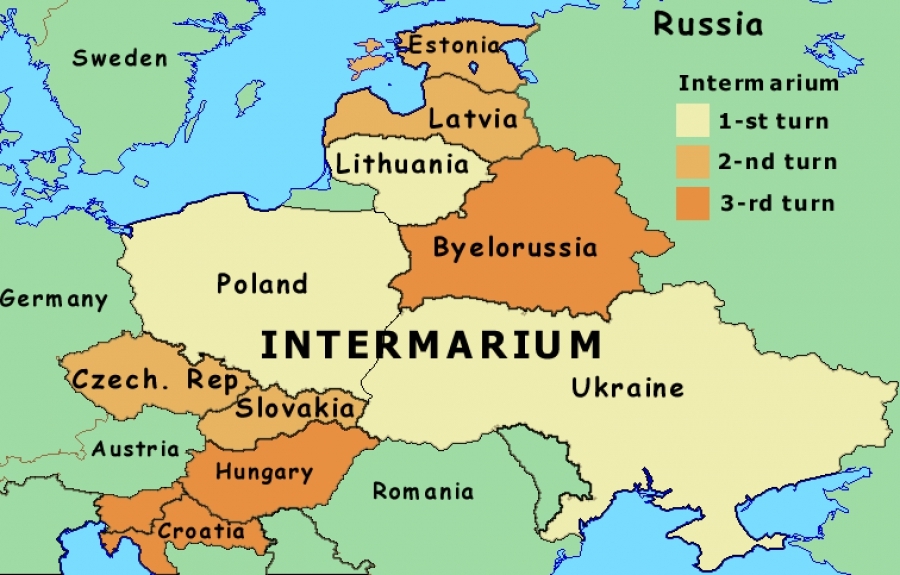
Intermarium – an alliance of countries between the Baltic and Black Seas to protect themselves from the Russian imperialism and militarism (Image: QHA.com.ua)
The EU is now in a deep crisis, one that is the product not only of Britain’s vote to leave it but also of the organization’s “inability to stand up to the global economic crisis, Russian military-political and information expansion, international terrorism and uncontrolled mass migration,” according to Aleksandr Voronin.
As a result, many in EU countries and their neighbors are considering alternatives, the Ukrainian commentator says. One of the most intriguing is a new push for the establishment of a Baltic-Black Sea Union or “Intermarium”— not as a replacement for the EU and NATO but as a supplement and assistant to them.

Last weekend, representatives of various groups, civic, military, and political, of the so-called “countries in between” met in Kyiv to talk about the possibilities for the emergence of such a union and what steps they should take to promote its emergence and development at the present time.
Nikolay Kravchenko, one of the organizers of the meeting, said that the grouping could begin small, much as the EU did with the European Coal and Steel Community, and then grow both in size and in the spheres of activity that its members would approve. He suggested that “the forefathers of the Intermarium are GUAM, the Eastern Partnership, the Black Sea Cooperation Council and the Vyshegrad Four.
Other participants in the Kyiv meeting agreed, Voronin reports, and stressed that any such structure should not aspire to replace the EU or “even more Euro-Atlantic solidarity in the framework of NATO” but rather focus on tasks like security, energy independence, and information technology that can be handled at the level of that region.
The idea of an Intermarium has deep roots in the 19th and early 20th centuries and especially in Marshal Pilsudski’s Promethean League.
For a careful survey of these roots, see the magisterial study by Marek Chodakiewicz, Intermarium: The Land between the Black and Baltic Seas (Transaction Publishers, 2012).
Since the end of the USSR, it has gained a following in Belarus and Ukraine. In the early 1990s, Zianon Pazniak, the first president of the Belarusian Popular Front, urged its consideration. And more recently, another Belarusian, Konstantin Volokh, called on Ukrainians to do likewise.
Even before Russia invaded Ukraine, he wrote that “it is obvious that the integration of post-socialist countries is chiefly directed at the creation of a system for the containment of eastern expansion and in the first instance by the forces and resources of those countries and peoples which experienced on their own skin the state of being hostages of the military competition between major geopolitical players and then the victims of the unification of one of the centers of socialist planning.”
This year, Voronin points out, is the 90th anniversary of the Promethean League which was founded by Polish efforts in Paris and which included representatives “not only of Crimea and Ukraine but also Azerbaijan, the Don Cossacks, Georgia, Idel-Ural, Ingria, Karelia, Komi, Kuban, the North Caucasus and Turkestan.
The Promethean League had a long and complex history. For a recent discussion, see Etienne Copeaux, “Le movement prométhéen.” Cahiers d’études sur la Méditerranée orientale et le monde turco-iranien, 16 (1993): pp. 9–45.
Many in Ukraine are now talking about a new Intermarium. Among them are Andrey Biletski, the founder of the Azov Regiment, Andrey Paruby, the speaker of the Verkhovna Rada, and most recently Vladimir Gorbulin, the head of Kyiv’s National Institute for Strategic Research.
Despite all this, the Intermarium idea has attracted relatively little attention among analysts in the West; but one indication of its rise is that Russian authors are now discussing it ever more frequently.
In a concluding section of his article entitled “Today It’s a Phantom; Tomorrow, a Strategy; and the Day after Tomorrow a Reality?” Voronin says that it is obviously too early to say that this idea has mass support. But given the crisis in the EU, “it is not excluded that soon the idea of the Intermarium will become a commonplace not only of party programs but of international memoranda.”
That is clearly what the participants in last weekend’s conference in the Ukrainian capital think. After all, they met under a banner reading “The Heart of Europe Beats in the East.”

“Intermarium in the 21st Century. A New Path for Europe?” by Nick Cohen
COLUMBIA UNIVERSITY IN THE CITY OF NEW YORK, November 15, 2019
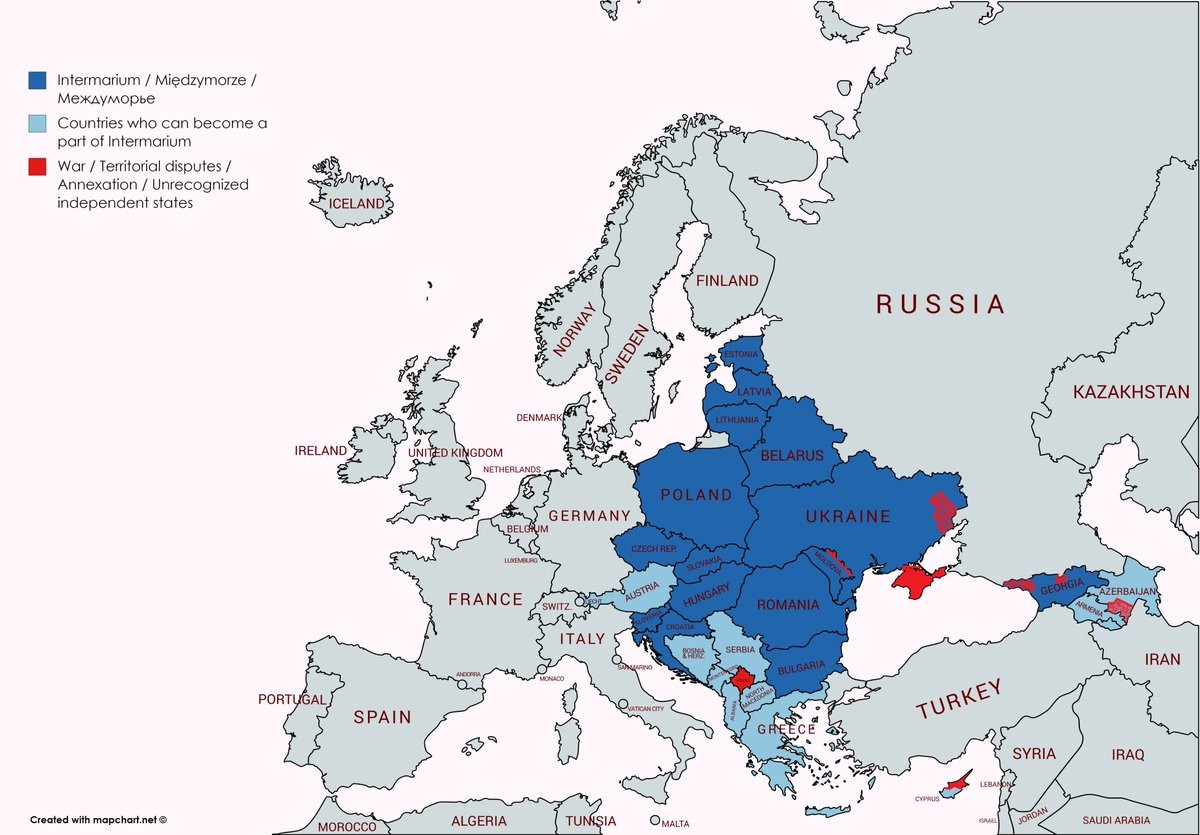
In the most recent issue of New Eastern Europe, MA student Nick Cohen advocates for a new version of the Intermarium suited to the 21st century. The Intermarium was an interwar Polish idea for a political and economic union among eastern European states from the Baltic Sea to the Black Sea, meant to counteract growing German and Russian adventurism in the region. Cohen argues that similar structural features are present today, and suggests that the political climate may be more favorable for constructing an eastern European alliance.
Click here to read the full article.
Nick Cohen is an MA Student in the European History, Politics, and Society program at the European Institute, Columbia University.
Intermarium in the 21st Century
Wed, December 23, 2020
This paper was written by Agnes Tycner for IWP 634: Geography and Strategy. Agnes is currently pursuing a graduate degree in Statecraft and International Affairs with a specialization in Eastern Europe and Russia. Her goal is to practice law one day and to gain experience in government, diplomacy, and policymaking until then.
The Intermarium Project, a geopolitical project developed by Józef Piłsudski in the 1920s, has once again resurfaced and become a topic of debate in foreign policy. Western Institutions such as the North Atlantic Treaty Organization (NATO) and the European Union (EU) have not proved to be sufficient in securing “non-integrated in-between states” such as Ukraine, Moldova, Georgia, and Azerbaijan against Russian aggression.[1] Neighboring countries in Eastern Europe also share this security threat and know from history what could possibly happen again if Russian power was to remerge. Recreating Intermarium in the 21st century to correspond to the security needs of today would unite Central and Eastern European countries to compete against the Russian balance of power as well as help each other politically and economically. However, Intermarium will not have a chance to be successful until all the post-Soviet countries work together and have a common global threat that will unite them. Furthermore, Intermarium as a united front would still need help from the U.S. military to face Moscow. If Intermarium in the 21st century was to succeed, it would create the strongest union in Eastern Europe since the 1989 national uprising dedicated to overthrowing communism.[2]
It was hoped that the collapse of the Soviet Union and the disintegration of the Soviet Eastern bloc would lead towards a more unified Europe. However, neither the EU nor the enlargement of NATO decided to include Russia in their plans. As a result, a “geopolitical gray zone emerged between the Western organizations on one side and the Russian-dominated space on the other.”[3] The security of these gray zone states such as Ukraine, Moldova, Georgia, and Azerbaijan all became dependent on whichever side would choose to cooperate with them. This model of switching between east and west proved to be greatly unstable, as “it did not help to solve the Transnistria problem in eastern Moldova or the Nagorno-Karabakh conflict in south-western Azerbaijan, and was shaken by the Russian-Georgian war of 2008.”[4] Finally, in 2014 the annexation of Crimea proved to be the “final straw,” and countries in the region knew they could not continue to live in this uncertainty.
Around this time period was when the countries of Eastern Europe, both inside and out of NATO and the EU, began seriously discussing reviving the 20th-century project known as Intermarium. The goal of this project would be collectively to increase the region’s security and, most importantly, “improve the balance of power against Russia.”[5] If all the nations in the region cooperated under this common objective, they would not need to expand NATO further East nor add members to the European Union. Intermarium in the 21st century would function as an independent project and, with time, prove itself to be a leader on the international stage.
There have been several attempts by NATO and the EU in the past to prevent Europe from dividing itself; however, none of their initiatives have proved themselves successful. The reality is that these institutions will not be able to provide the post-Soviet Eastern Europe zone with the security it needs. It has been proven that “both organizations have, in the past, amply demonstrated their inadequacy as strategically thinking and geopolitically resolute actors.”[6] As a result, Intermarium has been discussed as a promising alternative to Western organizations.
However, in order to recreate Intermarium in the 21st century, its historical roots must be understood first as well as the reason why it failed. After WWI, there was a set of newly-independent nations to the East which faced a common threat of “German expansionism to the west and Russian imperialism to the east.”[7] A Polish “chief of state and First Marshal of the Second Polish Republic” known as Józef Piłsudski (1867–1935) came up with the plan known as Intermarium today to combat these rising powers.[8] Piłsudski’s Intermarium project is originally known in Polish as Miedzymorze and later earned its Latin cognate known today as Intermarium. Both definitions translate to mean “between the seas.” This is because the alliance was to stretch from the Baltic Sea all the way down to the Adriatic and Black Seas. The original Intermarium group was to include Poland, Lithuania, Belarus, and Ukraine and “thereby partially re-creating the medieval Polish-Lithuanian Commonwealth.”[9] An example of the proposed map for the original Intermarium project is shown below:

Piłsudski believed that if these nations were connected economically, politically, and militarily, they could push back power coming in from the eastern and western fronts.[10] It should be noted that Piłsudkski also incorporated parts of his Promethean plan into his Intermarium project and used both of these developments to combat the Soviet threat while simultaneously strengthening the Polish eastern border.[11]
However, the plan was met with a large resistance due to Poland’s history of “political and cultural domination during the period of the Polish-Lithuanian Commonwealth.”[12] First, there was Belarus which was strategically located and could have “formed the most significant barrier to Soviet expansionism.”[13] However, it generally had a weak national movement during this period and did not seem to do much to counteract Soviet influence at the time. Next, Lithuania was also hesitant to join because it did not want to risk its independence. Ukraine had similar thoughts and had fought a border war in 1918-19 over the Lviv/Galicia area. Eventually, the Treaty of Warsaw was signed to enforce a military and economic alliance between Ukraine and Poland. However, they were so busy fighting between themselves that they failed to realize their common threat of Russia. Eventually, Ukraine and Belarus fell under the rule of the Bolsheviks, and the Intermarium project was foiled.
Józef Piłsudski then came up with a new version of the project that did not include communist-ruled Ukraine or Belarus but rather encompassed other nations of Central and Eastern Europe, as well as Scandinavian countries and Italy and Greece, as shown below.[14]

The reason for including a wide range of countries was to strengthen their union against “the face of the Russian empire re-appearing as the Soviet Union in the east, and the post-imperial, yet increasingly irredentist, new German nation-state and soon-to-be fascist Reich in the west.”[15] In the end, the wide geographical scale of the project, the large diversity of countries involved, their differences in interests and foreign policy, and the distrust regarding Polish ambition stopped Intermarium from ever happening.[16]
Unfortunately, after Piłsudski’s plans were foiled, his fears became a reality. In September of 1939, Germany and the Soviet Union invaded Poland from both sides. After the war ended, the states that were planned to be a part of Piłsudski’s Intermarium were instead part of Moscow’s empires. Lastly, the result of the February 1945 Yalta deal caused the Eastern and Central European nations to suffer a fate that Piłsudski was trying to prevent with Intermarium. For the next 44-46 years, these nations collectively suffered Soviet and communist rule. Having Intermarium in the 21st century would unite countries with these shared experiences to ensure that an occupation like this would not happen again.
Intermarium in the 21st century would not face the same challenges as were present during Piłsudski’s time. Today, borders are established, and these nations have been officially independent for about 30 years. In addition, the relations between Poland and Ukraine are much stronger than they were during the Polish-Ukrainian War in 1918-19. In fact, the two are each other’s greatest international supporters today. Taking this into consideration, the likelihood of a successful Intermarium is much more probable under current circumstances.
If an Intermarium were to be created today, Ukraine would be prioritized as it does not have any protection from NATO or other security measures outside its own country. Next, Poland, the original creator of this Slavic union, would be on the list. Poland faces the threat of Kaliningrad in the north and also would not want Russia on its southern border in the case of Ukraine being taken over.[17] In addition, the Baltic states, Bulgaria, Romania, Slovenia, Czechia, and Hungary would also likely follow suit as they “are likely to have populations that recognize the threat in the longer term.”[18] It is possible to consider the Nordic states such as Sweden and Finland joining, as they are not NATO members and also share a security concern with regard to Russia. It is not guaranteed which nations would end up joining, but it would be well advised to leave the welcome open to “Slavonic states in the Western Balkans” as well as “Georgia, Armenia and Azerbaijan.”[19]
The only real ambiguity in the region would concern Belarus. It is in the interest of Belarus’s neighbors to help liberate this country from Russia peacefully; however, Belarus is still greatly influenced by and intertwined with Russia politically, economically, and culturally. Still, one cannot forget how, “Belarussians have died in Maidan and in the war in Donbass fighting for Ukrainian liberty – and in the end for the liberty of Europe;”[20] therefore, this country cannot be left on its own.
A 21st-century Intermarium would be committed to protecting every nation threatened by Russia. Still, the most important factor to consider under a 21st-century Intermarium would be to not repeat the mistakes of the first project. This means not letting internal matters dominate and hopefully uniting under a shared, common global threat. Intermarium cannot be successful until, “the entire post-Soviet sphere in Europe, learns how to work in solidarity together.”[21] It should also be noted that “no successor state can stand up to Moscow successfully on its own.”[22] Therefore, only when these nations have put their differences aside would a proposed Intermarium in the 21st century have a chance for working out.
There is a question of whether Intermarium in the 21st century would even be relevant or needed today. In fact, the project had been largely forgotten in the political mainstream until 2014 when Crimea was attacked by Russia and Ukraine was left to its own defense, or in other words, left to fight alone. The driving force for this project to resurface today would be for uniting against possible Russian aggression and increasing overall security in the Eastern/Central European region. Ukraine felt abandoned by its Western Allies, which prompted it to look for new alternatives to strengthen its military and security.
This is why it would be important to establish Intermarium in the 21st century, a group that would be separate from the NATO alliance and would dedicate more attention to the concerns of the Intermarium member nations.[23] This is not to put the blame on NATO’s western allies; this is just to highlight the fact that the Central/Eastern European nations share a concern that is not prioritized by other NATO members. Another factor to consider is the “those closest to Russia are more concerned than those further away.”[24] Of course, this is expected; however, the Central European nations have all been “subjected to Russian domination” and are therefore cautious about Russia’s movements. For the Eastern countries of “Ukraine, Poland, the Baltic states, Romania, Moldova (and almost certainly Belarus too) Russia is a primary and existential threat.”[25] A proposed map of what Intermarium could look like in the 21st century is shown:

There are, so far, four possible strategies that Russia could use to attack its western neighbors. The first and best-case scenario is that Russia does not attack and stays content with its influence over Belarus, the Donbass region, and Crimea. It will still hold economic and political ties with Ukraine and Belarus but not show any desire to expand them more than they currently are. Next, the Russians could engage in hybrid warfare with Eastern European countries through propaganda, computer hacking, aggressive activities, and, even in some cases, physical harm. A third possible scenario is that Russia and Germany will once again form an alliance. Based on the historical idea of continuity, it is reasonable to assume that old alliances or pacts between Russia and Germany could resurface. The only solid proof currently available is Nord Stream 2, which is a gas pipe that combines the two superpowers and skips over the Baltics and Poland.
Lastly, the worst-case scenario is that Russia decides to attack Ukraine or another country in the Intermarium alliance. This attack would essentially provoke a response, “from Poland, Romania, Moldova, Bulgaria etc and for Russia to win that war would involve them attacking NATO nations thus drawing in Germany, France, UK, USA, Canada etc etc…”[26] The outcome of this scenario is highly debatable. Perhaps another Cold War would occur, or maybe there would be attempts to fight through conventional ways. The world has reason to believe something could happen based on Russia’s past actions and recent red flags which include: the Minsk II agreement after a failed first one, a growing partnership with China which is heavily politically and militarily intertwined, Russia testing limits and crossing NATO occupied zones with aircraft, the 2007 Estonia cyber-attack, Nord Stream 2, and many other incidents. One cannot predict the future or how Russia will act, but the hope is that Intermarium would have prepared strategies to respond to any of these situations.
Still, one must consider the possible consequences of implementing a 21st-century Intermarium. Russia wants to continue to keep Ukraine in its sphere of influence and will block any attempts to ensure that it does not link further with the West. It is already rather unlikely that Western NATO members will ever approve Ukraine of joining the alliance. They do not want to anger Putin nor lose their business deals, but they especially do not want to be involved in a war with Russia. Therefore, it is possible the allies and partners of Central/Eastern Europe would not support a 21st-century Intermarium. The Eastern Europe unified military power would unfortunately not be enough to support a real threat from Moscow, and it would need the help of the United States. However, having an Intermarium in place would provide greater security and perhaps a greater fighting chance.
One question of the past continues to arise among historians, “How different would the world be if Intermarium succeeded? Could have it prevented the German Reich?” Perhaps the same question will be given to late 21st century historians if Intermarium does not form this century.
Regardless, as the Russian state continues to break international law, it is no surprise that Intermarium is a topic that is resurfacing today. Ukraine would probably benefit the most from this project today; however, the security threat of Russia is shared throughout the region. As it is evident in history time and time again, the nations of central Europe have often been the battleground for war and therefore can only survive as a united pact. They all shared similar fates during WWI/WWII and, as a result, today, share historical reasons to join this kind of alliance. Perhaps one cannot guarantee how Intermarium would work out or who the exact members would be. Regardless, Intermarium in the 21st century is vastly different compared to the conditions Józef Piłsudski dealt with and has a greater chance of succeeding.
Intermarium is a geopolitical project from the 20th century that is gaining more momentum each year. The exact workings and politics of how Intermarium in the 21st century would work are still undergoing discussion by “post-Soviet politicians, diplomats, and intellectuals.”[27] Still, the important thing to note is that it is a project worth considering again and updating to the current needs of the 21st century. Today, it is mainly being advocated as a result of Central/Eastern European security concerns. If Intermarium in the 21st century is going to succeed, it needs total cooperation from each member state as well as U.S. military help. Intermarium has the potential to completely transform the international stage and overall create a stronger Europe for the future.
Russian-hating dream of Brzezinski Clan nears fulfillment as Poland agrees to host permanent U.S. base and turn Baltic Sea into NATO Lake
CovertAction Magazine on July 16, 2022
Imperialism, State Repression, Strategy, WarAmericas, Europe, Poland, Russia, Ukraine, United StatesNewswire
In late June, President Joe Biden announced before a NATO summit that the United States would establish a permanent military base in Poland, the first time the U.S. would have one on NATO’s eastern flank.
The base will provide a permanent headquarters in Poland for the U.S. Army’s V Corps.
At the moment there are already approximately 10,000 U.S. soldiers in Poland, which has provided a hub for U.S. and other Western countries’ arms shipments to Ukraine.

In April, U.S. Defense Secretary Lloyd Austin III agreed to accelerate delivery of U.S.-made Patriot air defense systems, HIMARS rocket launchers, F-35 combat aircraft and Abrams tanks to Poland and to help its military become “one of the most capable in Europe.”
Poland’s Defense Minister, Mariusz Błaszczak, said that the U.S. had agreed to sell Poland additional supplies of attack helicopters, drones and multi-role aircraft, which was made possible by passage of a new Homeland Defense Act in Poland boosting Poland’s defense spending to 3% of GDP, one of the highest levels in NATO.
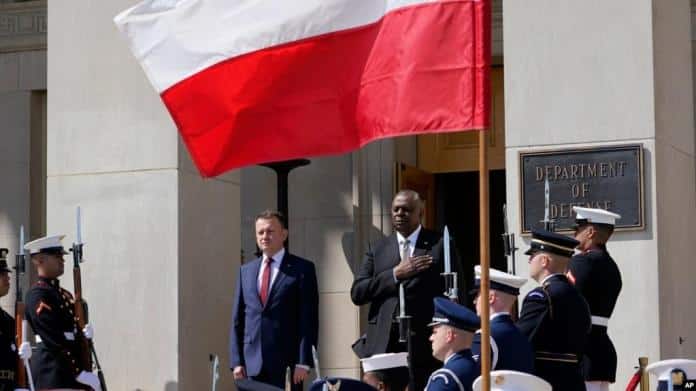
Poland Prime Minister Mateusz Morawiecki gushed about the results of the NATO summit in Madrid at the end of June, along with the recent invitation by NATO to Finland and Sweden to join NATO, which he said was a “historic decision as the Baltic Sea will, in fact, become a NATO internal sea.”
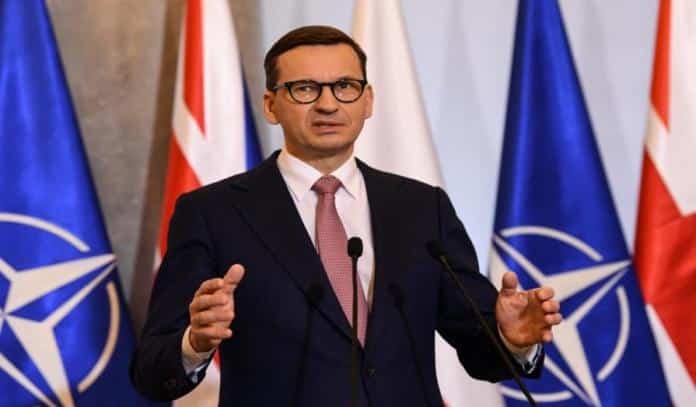
Intermarium
The Biden administration has accelerated its predecessor’s efforts to move the core of NATO from Paris and Bonn—what Donald Rumsfeld famously termed “old Europe”—to the East, as part of an aggressive drive to control former parts of the Soviet Union and Central Asia.
This policy has been part of the resurrection of the Intermarium—a geopolitical concept originating in the post-World War I era that envisages an alliance of countries reaching from the Baltic Sea over the Black Sea to the Aegean Sea that would serve as an alternative power bloc between Germany and Russia.
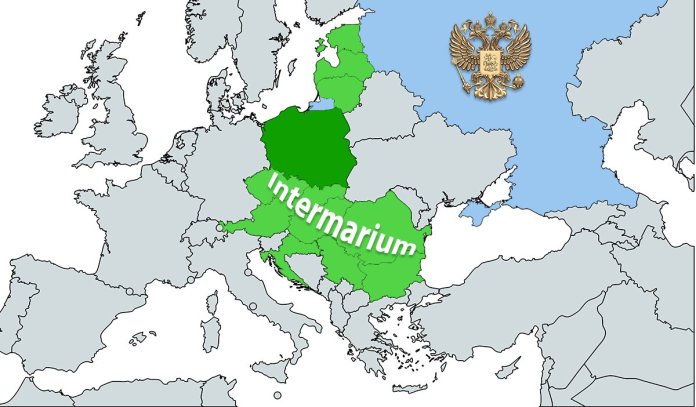
In March 2018, Poland signed a $4.75 billion deal to purchase U.S. Patriot missile defense systems from Raytheon, the largest arms procurement deal in Polish history.
Russian Deputy Foreign Minister Vladimir Titov told Sputnik News that the Patriot deployments were “part of a U.S. plot to surround Russia with missile defense systems under the pretext of mythical threats to security.”
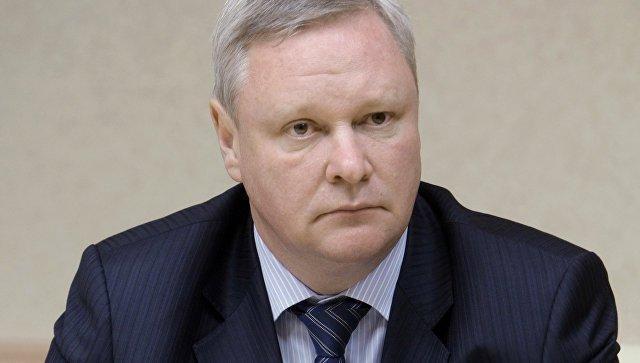
Now this plot has become ever more menacing to Russia, with the U.S. surrounding Russia not only with missile defense systems but also action-ready combat troops.
Reactionary Government
The Polish government under President Andrzej Duda is a reactionary regime which has banned the Communist Party of Poland, prohibited the promotion of communist ideas and introduced LGBT “free zones.”
Duda is a leader of the right-wing Law and Justice Party, which legalized government control over the media and has promoted the repression of critical intellectuals.
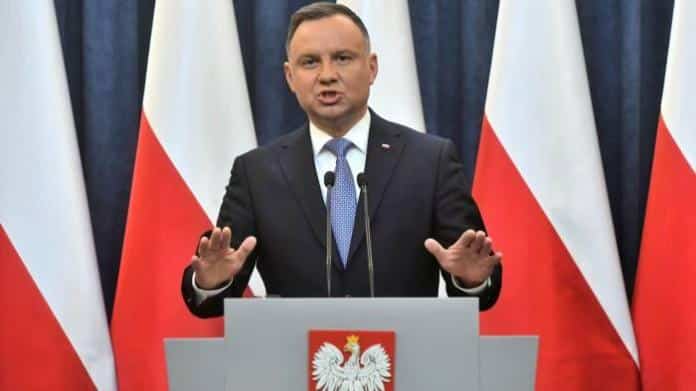
Duda has also promoted a right-wing revisionism surrounding World War II. In 2018, Duda signed a law that banned people from accusing Poland of Holocaust atrocities committed by the Nazis and from referring to concentration camps as “Polish death camps.”
The Duda regime has made a point of emphasizing Polish resistance to the Nazis, but has underplayed Polish crimes like the Jedwabne pogrom in July 1941, where Poles rounded up and killed their Jewish neighbors.
Meet the Brzezinskis
The current U.S. ambassador to Poland, Mark Brzezinski, is the son of Zbigniew Brzezinski, a key mastermind of U.S. foreign policy for decades, who supported Islamic terrorists in Afghanistan in the late 1970s and 1980s in an attempt to give the Russians their Vietnam.
A life-long Democrat who was close to Joe Biden when he was vice president, Zbigniew came from a Polish aristocratic family who hated the Russians.
His father, Tadeusz, fought for Poland in the Battle of Lvov in the Soviet-Polish War of 1920—the only defeat in the history of the Red Army, which Tadeusz said helped save Western civilization[1]—and was a Polish diplomat posted to the Soviet Union in the 1930s during Stalin’s Great Purge.
After fleeing to Canada following the Communist takeover in Poland after World War II, Tadeusz moved to Montreal and became president of the far-right Canadian Polish Congress (1952-62).
A chip off the old block, Brzezinski grew up hearing stories from his father about mass disappearances in Soviet Russia, which he said “had an enormous impression on me at a young age.”[2] A star student, Zbig received a B.A. and M.A. from McGill University in 1949 and 1950 and a Ph.D. from Harvard in 1953 with a dissertation on the relationship between the October Revolution, Vladimir Lenin’s state and the actions of Joseph Stalin.
Around this time, he came into contact with Jan Nowak-Jezioranski, head of the Polish desk of the CIA’s propaganda organ, Radio Free Europe.
Brzezinski subsequently collaborated with his Harvard colleague Carl J. Friedrich to develop the concept of totalitarianism in their 1956 book Totalitarian Dictatorship and Autocracy as a way to more powerfully characterize and criticize the Soviets.
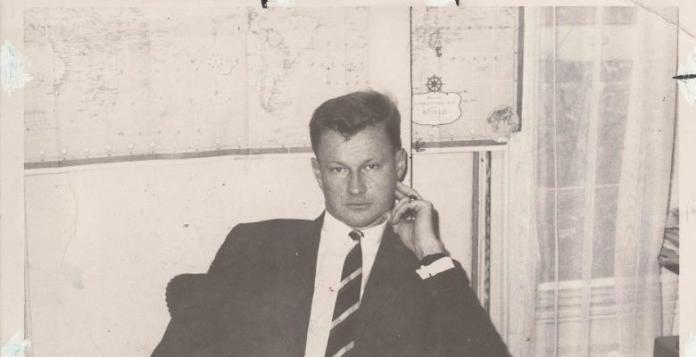
The concept was rebuked by historians because it rejected the possibilty of change within the Soviet system, which occurred under glasnost and perestroika, and created a false binary between the “democratic” West and Communist bloc states.
After teaching at Harvard and Columbia, Brzezinski was appointed Jimmy Carter’s National Security Adviser. In that position, he advocated for “an arc of Islam” across the Middle East to counter Soviet influence. Brzezinski also lobbied successfully for ending Richard Nixon and Henry Kissinger’s détente policy and for using China as a tool against the Soviet Union.
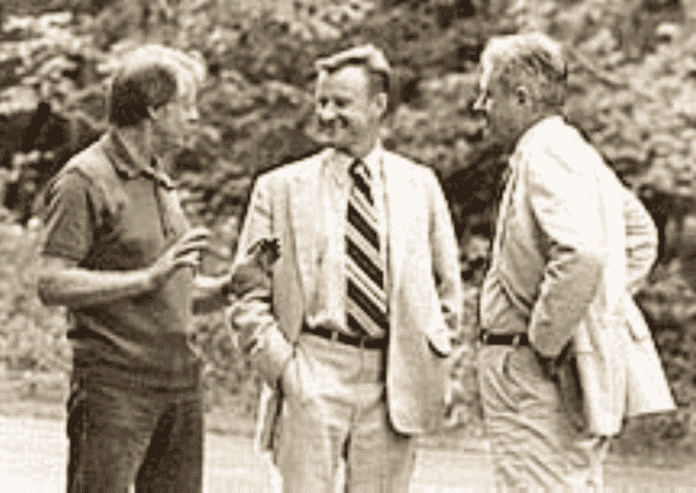
An early supporter of the Vietnam War who characterized the New Left as “an infantile disorder,” Brzezinski was a founder of the Trilateral Commission, which sought to revitalize U.S. power after Vietnam while strengthening the U.S. alliance with Western Europe and Japan.[3]
In his 1997 magnum opus, The Grand Chessboard: American Primacy and Its Geostrategic Imperatives (1997), Brzezinski drew on the theories of British imperial strategist Halford Mackinder to advocate for U.S. dominance of Central Asia, which he regarded as the key to world domination.
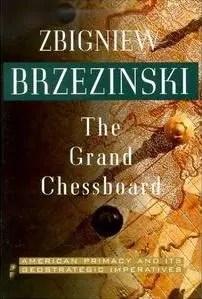
Brzezinski was despised in Russia, where he was viewed as anti-Soviet and a Russophobe. Before his death in 2017, he warned that Putin was intent on re-establishing the former czarist empire.
He supported sanctions against Russia, NATO expansion and the 2014 coup in Ukraine and U.S. arming of Ukraine with anti-tank weapons so it could carry out urban warfare against the Russians.
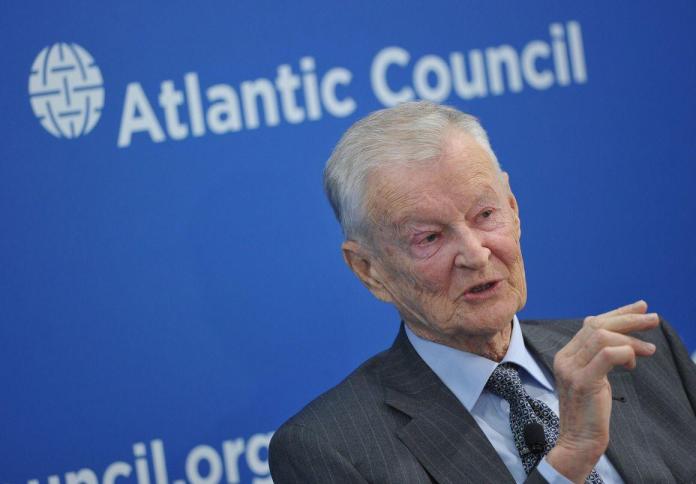
Another Chip Off the Old Block
Zbig’s son Mark—a corporate lawyer with a Ph.D. in political science from Oxford who served from 1999 to 2001 as director of Russian/Eurasian and Southeast European affairs at the National Security Council—has a similar worldview to both his father and grandfather.
A member of the Council on Foreign Relations, an elite think tank advocating for imperialist foreign policies, and the Trilateral Commission like his dad, the younger Brzezinski helped lead U.S. policy implementation in relation to NATO enlargement in the late 1990s.
He also helped oversee a color revolution in Serbia that resulted in the ouster of Socialist Slobodan Milošević, who had tried to keep the Yugoslav Federation together and resisted U.S. regional designs.
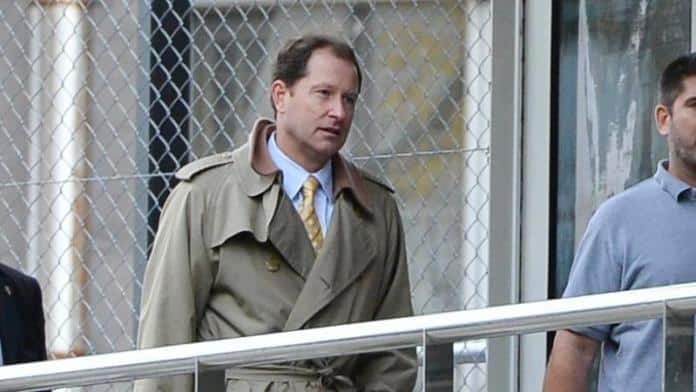
In a recent interview, Mark Brzezinski called Lech Wałęsa, the “Solidarity” leader who received CIA funding to overthrow Poland’s communist government in the 1980s, a “freedom fighter.”
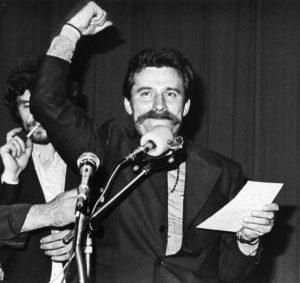
With regard to the Ukraine War, Mark Brzezinski claimed that, “for Poland, this is 1939. This is the invasion of a Slavic country, with the people trying to fight back, and the Poles want to help. This is what the Ukraine crisis is for Poland. And it’s an amazing story because, unlike 1939, you now have people getting into their cars, driving to the border, picking up Ukrainian families, and taking them to put them into people’s homes and apartments.”
In short, the Russians are playing the role of the Nazis and Poles the saviors of the victims of their invasion.
Long Held Dream Being Fulfilled
Being on the front lines of the Ukraine War, Poland has supplied Ukraine with howitzers as part of a $650 million military weapons contract—the biggest in the last three decades—while taking in millions of Ukrainian refugees and serving as a main conduit of Western weapons and aid under Mark Brzezinski’s careful watch.
At the end of June, the Russians claimed to have killed “up to 80 Polish fighters” in eastern Ukraine while at least two battalions of Polish army military personnel equipped with anti-tank guns and American armored cars were transferred to the Dnieper region in Ukraine.

Somewhere both Tadeusz and Zbigniew Brzezinski are smiling from their graves.
Their long-held dream of using Poland as a lever to strike a blow against the Russians is finally being fulfilled—at the potential cost of igniting a world war.
Notes:
At the request of President Woodrow Wilson, the United States granted Poland a war loan of $176 million, enabling the purchase of, among other things, approximately 200 tanks, 300 planes, war materials and food for the Polish Army. An American fighter pilot squadron defended access to Lviv during the Battle of Zadwórze on August 17, 1920, and other Americans fought against the Red Army in Semyon Budyonny’s 1st Cavalry Army.
Anna Kasten Nelson, ed., The Policy Makers: Shaping American Foreign Policy from 1947 to the Present (New York: Rowman & Littlefield, 2009), 111.
Brzezinski was also a member of the Council on Foreign Relations (“Wall Street’s think tank”) and the Bilderberg Group.
Intermarium Support Group was founded in the Estonian Parliament
by Intermarium Support Group 22.09.2022
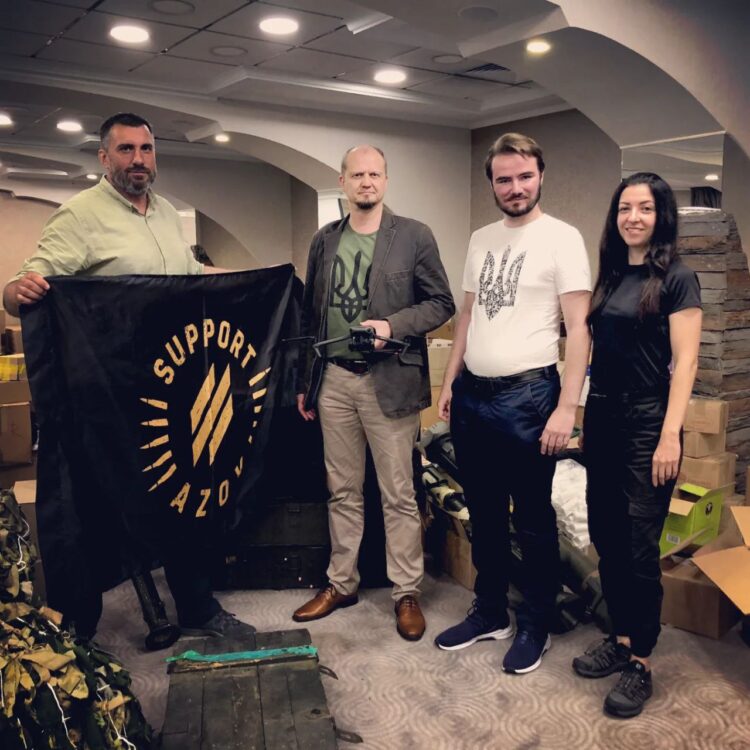

According to the press release of the Estonian Riigikogu from Sep. 14, 2022, a parliamentary group named Intermarium Support Group was created in the Estonian Parliament. Its purpose is to promote cooperation between Eastern European countries as a counterweight to Russia’s imperial ambitions.
The chairman of the Intermarium Support Group, MP Anti Poolamets (EKRE), noted that the group was launched on the example of the Verkhovna Rada of Ukraine. September 30, 2020, MP Sviatoslav Yurash (Sluga Narodu) established the biggest in the Ukrainian Parliament Intermarium Caucus. This parliamentary group, in turn, summarized the efforts of NGO Intermarium Support Group, which was founded by National Corps and is coordinated by Olena Semenyaka, assistant of MP Sviatoslav Yurash.
Earlier this August, Anti Poolamets and another MP from EKRE, Ruuben Kaalep, an ardent promoter of Intermarium initiatives in the region and a regular participant of the Ukrainian Intermarium Support Group’s events, visited Ukraine to show solidarity with Azov soldiers, those undergoing rehabilitation and held in the russian captivity in particular, as well as donated a drone: Estonian MPs in Kyiv call to declare russia a state sponsor of terrorism
“Ukraine needs a wider and faster inclusion in international cooperation formats. The Intermarium, or the union of countries between the seas, has a deep, centuries-long background of cooperation in the territories of Lithuania, Ukraine, Poland and Belarus. It is a powerful regional group of countries that share a common historical experience of long-term loss or limitation of sovereignty under communist regimes. That is why the Intermarium countries can value freedom highly. The population, economic weight and military power of these countries would make it possible to create a strong counterweight to russia’s imperial ambitions in cooperation,” the chairman explained.
Also, Anti Poolamets stressed that it was crucial to modernize transport corridors, above all, gas connections, so that these countries could avoid russian blackmail in the future. “Looking into the future, Intermarium cooperation model should also include Belarus, which assumes the country’s independence from Russian control and the restoration of democracy,” he added.
The chairman of the Intermarium Support Group is Anti Poolamets, and the caucus includes Jaak Valge, Urmas Reitelmann, Tarmo Kruusimäe, Ruuben Kaalep, Leo Kunnas and Paul Puustusmaa.
“Parliamentary groups formed in the Riigikogu help members of the Riigikogu communicate with the parliaments of other countries, implement foreign policy and introduce Estonia to the rest of the world. Through support groups, Riigikogu members and factions can draw attention to a specific topic and promote and protect the interests of a narrower area of life. The XIV Riigikogu has formed a total of 67 parliamentary groups and 96 support groups,” press release states.
Poland’s role in the Intermarium idea
Blue Europe – Think Tank / Feb 8, 2023

“Who rules East Europe commands the heartland, who rules the heartland commands the World-island, who rules the World-island commands the World”. These are the exact words used by renowned British geopolitician Halford Mackinder to convey the significance of the region situated in the eastern portion of the North European plain, the region bounded by the Baltic and Black seas. After regaining their independence at the beginning of the 20th century, Polish legislators tried to reimagine their region as the Intermarium, a powerful land force united to protect central Eastern Europe’s honour amid the revival of Germany and Russia.

Czartoryski was given the death penalty by Tsar Nicholas the First of Russia because he presided over the provisional government during the November revolt in the early 19th century. Czartoryski vigorously promoted the Polish cause while in exile in the Western countries, primarily France and England, as well as the Ottoman empire. His goal was to revive the Polish-Lithuanian Commonwealth, which would have joined forces with other Central European countries like as the Czechs and Slovaks, the Hungarians, the Romanians, the Serbs, and others in a confederation or alliance.
In order to balance the Germanic States in the West and the Russian Empire in the East, it was intended to construct a block of states, primarily Slavic. The lack of acceptance in the West would ultimately cause the concept to fail. The prospects of the coalition succeeding, even if Poland were to reappear, were limited because of territorial conflicts with Slovakia, the Czech Republic, Hungary, Romania, and the Czech Republic.
Many countries in Central Europe regained their independence as a result of the end of World War I, including Poland, Lithuania, Czechoslovakia, Latvia, and Estonia. The hope of building a force in the region that could resist both the empires from the East and the West arose as a result of the weariness of war in European powers and the new geopolitical configuration.
Józef Pilsudski and his legacy over the Intermarium idea
The founding leader of the second Polish Republic, Józef Pilsudski, shared the goals of the Polish head of state and later served as field marshall, leading the Polish army in the successful conflict with Bolshevik Russia. The plan he envisioned was in nature identical to the concept of Czartoryski, and it eventually came to be known under the name Intermarium, which is Latin for between the seas. In 1920, it was sealed by victory in the Battle of Warsaw, also known as the Miracle of Vistula.
After the war with Russia, Pilsudski realised that building a bloc of nations that could counterbalance Germany and Russia was the only way to defeat the threat posed by their expansionism. In its current form, the motion called for the creation of a federation that would include Poland, Lithuania, and Ukraine. Poland would continue to be the de facto senior partner in that relationship even if it were to give part of its territory to Ukraine.
The Pilsudski idea was opposed by everyone. The Soviet Union attempted to obstruct the Intermarium agenda because their zone of influence was in danger. The Allied Powers believed that Bolshevism was only a transient threat and did not want to see Russia, an essential historic partner from a balance of power standpoint, diminished. They disapproved of Pilsudski’s rejection of his White allies, held him in low regard, rejected his ambitious intentions, and pushed Poland to limit its territory to Polish-majority areas. The Ukrainians, who were also seeking independence but were concerned that Poland might once again subjugate them, and the Belarusians, who lacked a strong sense of national identity, were not interested in either independence or Pilsudski’s proposals for union. The Lithuanians, who had restored their independence in 1918, were also unwilling to join.
A string of post-World War I wars and border disputes — the Polish-Soviet War, the Polish-Lithuanian War, the Polish-Ukrainian War, and border clashes between Poland and Czechoslovakia — between Poland and its neighbours in disputed territory did little to help Pilsudski’s plan.
In order to weaken Russia, Pilsudski wanted to divide the Soviet Union along national lines. The idea was the Great Eastern Empire, which included the countries of Poland, Ukraine, Lithuania, and Belarus, rather than the nation of Poland. Germans and Russians were divided by this “kingdom,” which stretched from the Baltic to the Black sea and had historical roots. Pilsudski was aware that four distinct nationalities with individual state aspirations were born in the formerly Commonwealth-occupied territories.
While some academics take Pilsudski’s claims of democratic ideals for his federative plan at face value, others view them with scepticism and point to a coup d’état in 1926 in which Pilsudski seized practically totalitarian powers. Oleksandr Derhachov argues that the federation would have created a bigger Poland in which the interests of non-Poles, especially Ukrainians, would have gotten little consideration. Most Ukrainian historians, in particular, have negative opinions of his concept.
However, none of them have a possibility of long-term independence unless they have a sufficiently strong geopolitical potential. Pilsudski, who revived the Commonwealthan ideology, also observed its unfavourable consequences, namely the dominance of the Polish nation over the others. He thought that pluralistic democracy and true federalism were the best remedies for averting this kind of crisis, but this strategy failed for two reasons. The first was the mistrust of Lithuanian and Ukrainian political figures regarding the intentions of the Polish government.
They feared that the system’s control by the Polish nation would jeopardise their recently attained freedom. The second was an internal Polish factor. In opposition to the Polish socialist party, which Pilsudski came from, the national democrats and Polish nationalist ideology political movement coalesced around Roman Dmowski. As they saw no hope of building an effective government with Lithuanians or Ukrainians, they decided to create a monoethnic state.
The idea was finally dropped after the Treaty of Riga was signed in 1921 by Poland, Soviet Ukraine, and Soviet Russia, delineating the Polish-Russian border. The states of the Baltic-Black Sea block were going to benefit from the greatest strategy in twenty years because to this lack of geopolitical power consolidation.
A federation of states stretching from Finland in the north to Greece in the south was the concept that sparked interest in the political sector. When he was Poland’s minister of foreign affairs at the time, Józef advocated a Third Europe alliance of Central European nations to counterbalance the geopolitical influence of the USSR, authoritarian nations like Germany and Italy, and the Western powers England and France.
The alliance would be led by Poland, Hungary, and Romania, with Czechoslovakia, Yugoslavia, Lithuania, Latvia, Estonia, Finland, and potentially Italy joining later. However, there was no foundation for this idea to manifest itself as a true force. Italy remained on the German side, the Transylvania conflict between Romania and Hungary persisted, and no one was willing to accept Poland’s leadership. Soon after, World War II started, shattering any significant plans to reestablish a dominant power in this part of Europe.
The Polish elites abandoned the Intermarium’s will in conformity with Moscow’s will throughout the course of the following 44 years whereas the elites in exile did not. In the Paris-based publication Kultura, Jerzy Giedroyc and Juliusz Mieroszewski, who were both living in France at the time, established the idea of a sovereign Polish state in which they firmly believed. Giedroyc once remarked, “Without free Lithuania, Belarus, and Ukraine, there cannot be a free Poland.

Three issues of “Kultura” Photo: Literary Institute
Rebuilding positive ties with the nations of Central and Eastern Europe was the cornerstone of the Giedroyc-Mieroszewski ideology. According to this plan, Poland would have to give up any imperial aspirations and contentious territorial claims in addition to accepting the post-war state structure and, consequently, the loss of Vilnius and Lviv, two crucial cities for Poles.
In essence, the theory was not hostile to Russia and backed the independence of Belarus and Ukraine. Giedroyc and Mieroszewski urged Poland and Russia to give up their plans to dominate the Eastern lands, primarily Ukraine, Lithuania, and Belarus. As a result, the ideology is also known as the ULB philosophy, which is derived from the initials of these nations.
In Wadysaw Sikorski’s Polish Government in Exile, the idea of a “Central European Union” — a triangle geopolitical bloc rooted in the Baltic, Black, and Adriatic or Aegean Seas — was revived during World War II. Discussions in 1942 between the exiled governments of Greece, Yugoslavia, Poland, and Czechoslovakia over potential Greek-Yugoslav and Polish-Czechoslovak federations ultimately failed because to Soviet opposition, which caused Czech reluctance and Allied ambivalence or hostility. The construction of a federal union for Central and Eastern Europe that was not dominated by any one state was advocated in a statement made at the time by the Polish Underground State.
It represented a paradigm shift from the widespread viewpoint of Polish immigrants from the 1950s and 1960s who were determined to establish Polish dominance in the eastern regions of the old Polish-Lithuanian Commonwealth and did not want to give up their quest for that goal. In contrast to Mieroszewski, who passed away in 1976, Giedroyc lived to see Poland gain its independence in 1989, and their philosophy was the one that came the closest to the tactics used by the Polish government in the East following 1989.
Among other things, Poland supported libertarian inclinations in Ukraine, Russia, and other nations. However, with the dissolution of the Soviet Union, the newly established Belarusian government proposed an economic and customs union with Minsk. Poland at the time looked almost primarily to the West for economic power, therefore Warsaw rejected. As a result of this perspective, we joined the NATO, the European Union, the German-controlled West European supply chain, and the American military’s safety net.
The Polish state had been without stability for about 250 years before these decisions were made. The abandoning of geopolitical philosophy, of which Intermarium was a crucial notion, was brought about by prosperity and geopolitical stagnation brought about by American hegemony. Poles in the East prioritised the interests of the West over their own and those of the EU, US, and other countries.
Modern Intermarium initiatives
The ULB doctrine’s relationship with Belarus, the second-most significant nation after Ukraine, became almost entirely muddled. Poland, along with other countries in Central and Eastern Europe, must reevaluate its place in the region as global system tensions rise. Under a variety of titles, most recently the free-seas initiative, the notion of a similar alliance to the Commonwealth slowly started to resurface on the agenda.
The limited potential of Poland in comparison to Germany’s and Russia’s economic and military might makes the idea of Intermarium exceedingly challenging to carry out without an external patreon, according to the grassroots geopolitical thought in Poland. The USA is the sole contender for this title.
American agenda in the European theatre presupposes that a bloc of Central and Eastern European nations is aligned with US objectives in order to counterbalance the potential consolidation of Germany and Russia. The ambition to deliver energy to Ukraine and Belarus through terminals in Poland and Lithuania was the initial symptom.
The Visegrád Group nations of Poland, the Czech Republic, Slovakia, and Hungary announced the formation of a Visegrád Battlegroup on May 12, 2011, under the leadership of Poland. By 2016, the battlegroup had been established as a separate entity from the NATO command. The four nations were also supposed to start conducting combined military drills under the supervision of the NATO Response Force starting in 2013. This was viewed by some academics as the first step toward close regional collaboration in Central Europe.

In his inauguration address on August 6, 2015, Polish President Andrzej Duda announced ambitions to create a regional alliance of Central European nations based on the Intermarium idea. The Three Seas Initiative had its inaugural summit in Dubrovnik, Croatia, in 2016. Along a north-south axis from the Baltic Sea to the Adriatic Sea and the Black Sea, the Twelve Seas Initiative has 12 member states: Estonia, Latvia, Lithuania, Poland, Czech Republic, Slovakia, Austria, Hungary, Slovenia, Croatia, Romania, and Bulgaria.
Every nation threatened by Russia would be covered by a 21st-century Intermarium. To avoid making the same mistakes as the original project, however, would be the most crucial aspect to take into account in an Intermarium for the twenty-first century. This entails putting aside personal issues and, ideally, coming together in the face of a shared, collective global peril. Until “the entire post-Soviet realm in Europe learns how to work in solidarity together,” Intermarium will not be successful. It should be remembered that no successor state can successfully confront Moscow by itself. Therefore, a projected Intermarium in the twenty-first century would only have a chance of succeeding when these nations have set their differences aside.
It is hardly surprising that Intermarium is a topic that is reviving today given that the Russian state continues to violate international law. Today, Ukraine would undoubtedly gain the most from this initiative, but the entire area is concerned about Russia’s security threat. The nations of central Europe have frequently been the scene of war, as history has demonstrated time and time again, thus they can only exist as a single alliance.

Due to their shared experiences during World Wars I and II, they all have historical motivations to form this kind of partnership today. Perhaps it is impossible to predict how Intermarium will function or who the actual members will be. In any case, Intermarium in the twenty-first century is very different from the circumstances that Józef Pilsudski faced and has a better chance of success.
A geopolitical initiative from the 20th century called Intermarium is gaining ground every year. Post-Soviet politicians, diplomats, and intellectuals are still debating the precise operations and politics of Intermarium in the twenty-first century.
precursor: Bucharest Nine
From Wikipedia, the free encyclopedia
| Bucharest NineBucharest Format | |
|---|---|
| Members of the Bucharest Nine | |
| Membership | |
| Establishment | 4 November 2015 |
The Bucharest Nine or the Bucharest Format (B9 or B-9; Polish: Bukaresztańska Dziewiątka, Romanian: Formatul București) is an organization founded on 4 November 2015 in Bucharest, Romania, at the initiative of the President of Romania Klaus Iohannis and the President of Poland Andrzej Duda during a bilateral meeting between them.[1] Its members are Bulgaria, the Czech Republic, Estonia, Hungary, Latvia, Lithuania, Poland, Romania and Slovakia. Its appearance was mainly a result of a perceived aggressive attitude from Russia following the annexation of Crimea from Ukraine and its posterior intervention in eastern Ukraine both in 2014. All members of the B9 were either part of the former Soviet Union (USSR) or members of the defunct Soviet-led Warsaw Pact.
NATO Secretary General takes part in B9 Summit
NATO, June 10 2022
Secretary General Jens Stoltenberg attended the Bucharest Nine (B9) Summit by video teleconference on Friday (10 June 2022), to prepare for the NATO Summit in Madrid at the end of this month. The B9 format, established at the initiative of Polish President Duda and Romanian President Iohannis in the aftermath of Russia’s first invasion of Ukraine in 2014, includes NATO Allies Bulgaria, the Czech Republic, Estonia, Hungary, Latvia, Lithuania, Poland, Romania and Slovakia, and its summit is currently taking place in Bucharest.
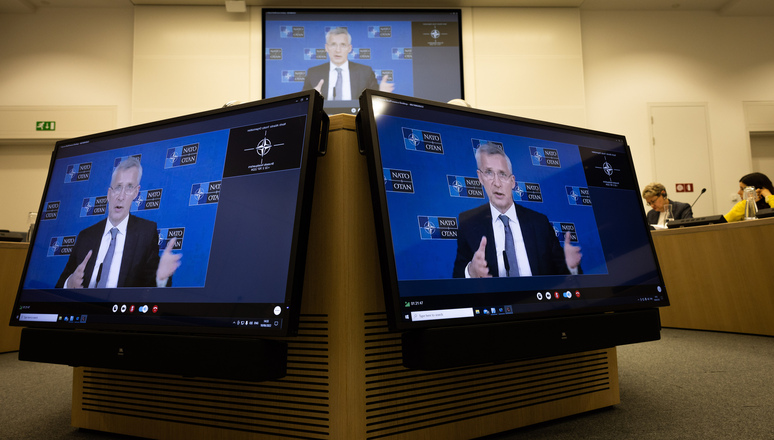
The NATO Secretary General thanked the B9 group for their strong support of transatlantic unity, their significant contributions to Euro-Atlantic security, as well as their consistent support for Ukraine’s sovereignty. He stressed that today’s meeting is particularly timely in view of President Putin’s second invasion of Ukraine, leading to the worst security situation in Europe since World War Two. NATO has responded quickly, Mr. Stoltenberg said, including by doubling the number of multinational battlegroups from the Baltic to the Black Sea, with new battlegroups in Bulgaria, Hungary, Romania and Slovakia.
At the NATO Summit in Madrid, all 30 Alliance leaders will take the next steps to continue to adapt the Alliance to a more dangerous and competitive world. The Secretary General outlined the importance of further strengthening deterrence and defence, including on the eastern flank, with more combat-ready forces, together with more enablers and pre-positioning, to leave no doubt that NATO will protect every inch of Allied territory.
Mr. Stoltenberg also stressed the importance of continued investment in defence and resourcing the Alliance at this critical time, commending the B9 members for the fact that many of them meet or exceed the 2% target of GDP on defence spending. The Secretary General outlined the need to deepen partnerships at the Madrid Summit, including with Ukraine, Georgia, Finland and Sweden, the European Union, and Asia-Pacific partners.
Intermarium Winter School
Jan 17, 2023

We are noticing that the world is undergoing rapid transformation, and the geopolitical situation is changing very dynamically. The change in the balance of power in connection with the war in Ukraine, the internal tensions and transformations within the European Union, the attempt of the EU institutions to exert pressure on the EU Member States from Central and Eastern Europe in the shaping of their internal policies – all this makes cooperation within the framework of the Inter-Mediterranean Region a civilizational necessity in the near and distant future.
The Intermarium Winter School (“IWS”) is:
- getting to know each other, and become more familiar with our common history and culture;
- the discussions about the future of our countries and the region as a whole;
- an opportunity to meet famous polish scientists, politicians and publicists;
- a meeting of a young people, who actively engage in the social life of their countries;
- an establishment of relationships that will result in cooperation in the fields of culture, education, politics, energy.
IWS will consist of workshops and lectures conducted by prominent figures of Polish social and academic life, as well as politicians. The list of invited guests includes:
- prof. Andrzej Zybertowicz, advisor to the President of the Republic of Poland
- prof. Przemysław Czarnek, the Minister of Education and Science of the Republic of Poland
- Att. Jerzy Kwaśniewski, the President of the Ordo Iuris Institute for Legal Culture
- dr Patryk Jaki, Member of the European Parliament
- Marek Jurek, former Speaker of the Parliament of the Republic of Poland
- Grzegorz Górny, the leader of the Three Seas Foundation
- Istvan Kovacs, strategic director of the Center for Fundamental Rights
- Artur Zawisza, former Member of Parliament, specialist in energy renewables
- dr Filip Ludwin, Associate Professor, Vice-Rector for Education
- Arkadiusz Robaczewski, philosopher, lecturer
Lectures are conducted in English.
INTERESTINGLY, THE FAR-RIGHT IS BLIND TO THE DISSOLUTION OF THEIR NATIONAL INDENTITY IN THE NEW GEOPOLITICAL BORSCH
So Nazis from either side of the Polish-Ukrainian border push for this too.

Need I add anything more?

ALSO SEE:
EU IS BUH-BYE! GERMAN PAPER AND MORE SOURCES CONFIRM OUR ANALYSIS (Jan. 2021)
PS: I have a strong hunch Russia is a partner here and there’s a certain collaboration in this plan. For later reference.
To be continued?
Our work and existence, as media and people, is funded solely by our most generous supporters. But we’re not really covering our costs so far, and we’re in dire needs to upgrade our equipment, especially for video production.
Help SILVIEW.media survive and grow, please donate here, anything helps. Thank you!
! Articles can always be subject of later editing as a way of perfecting them
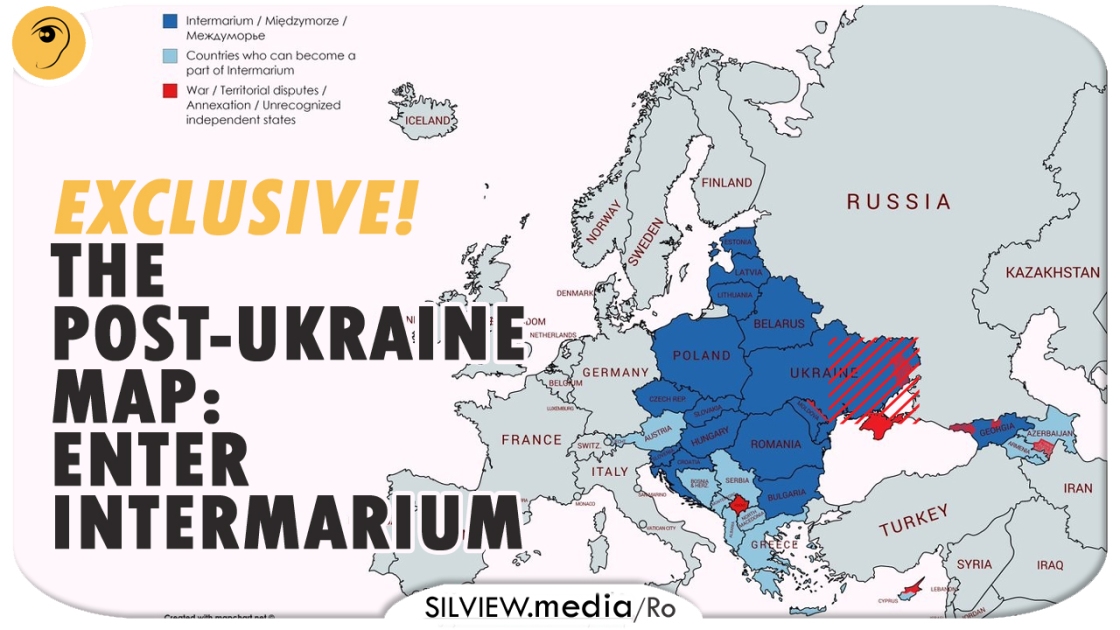


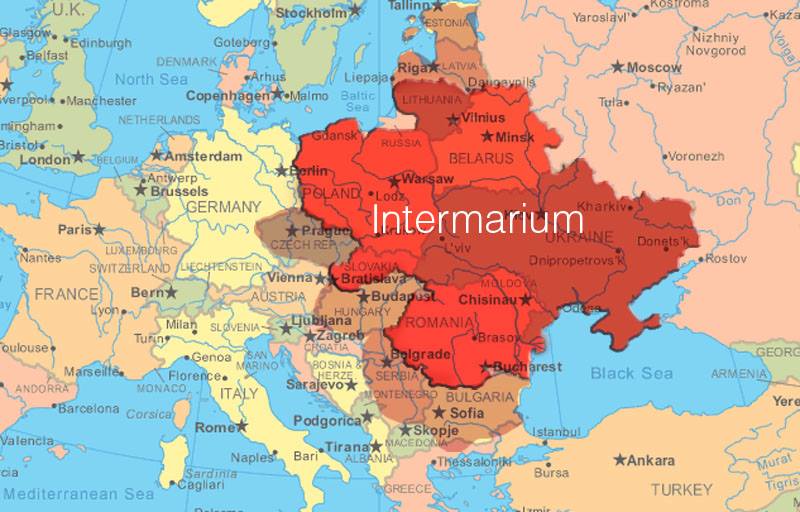











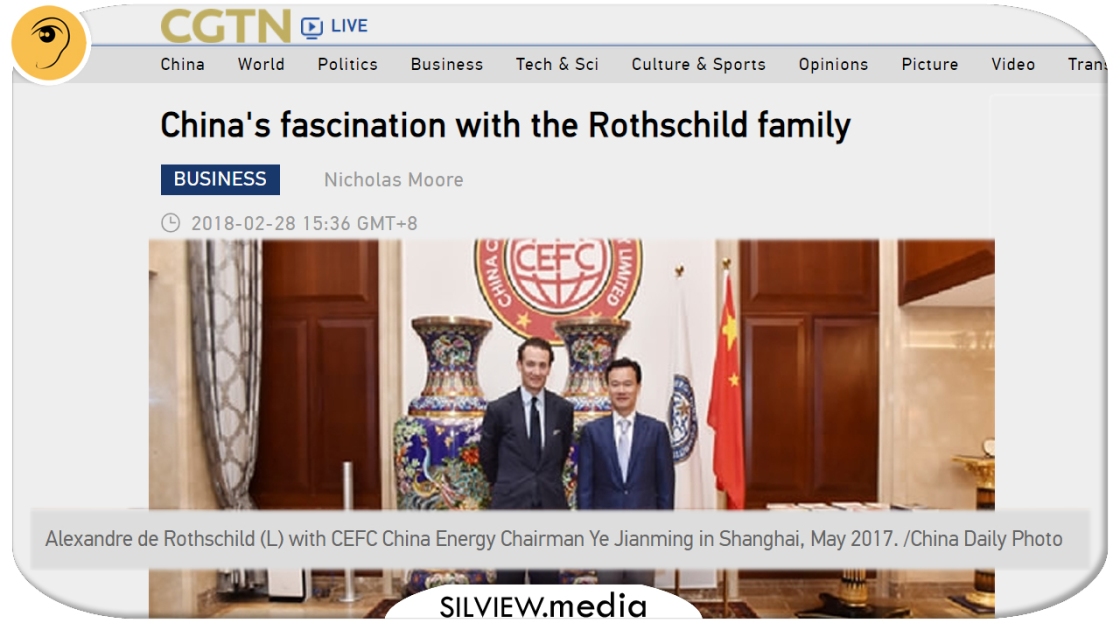
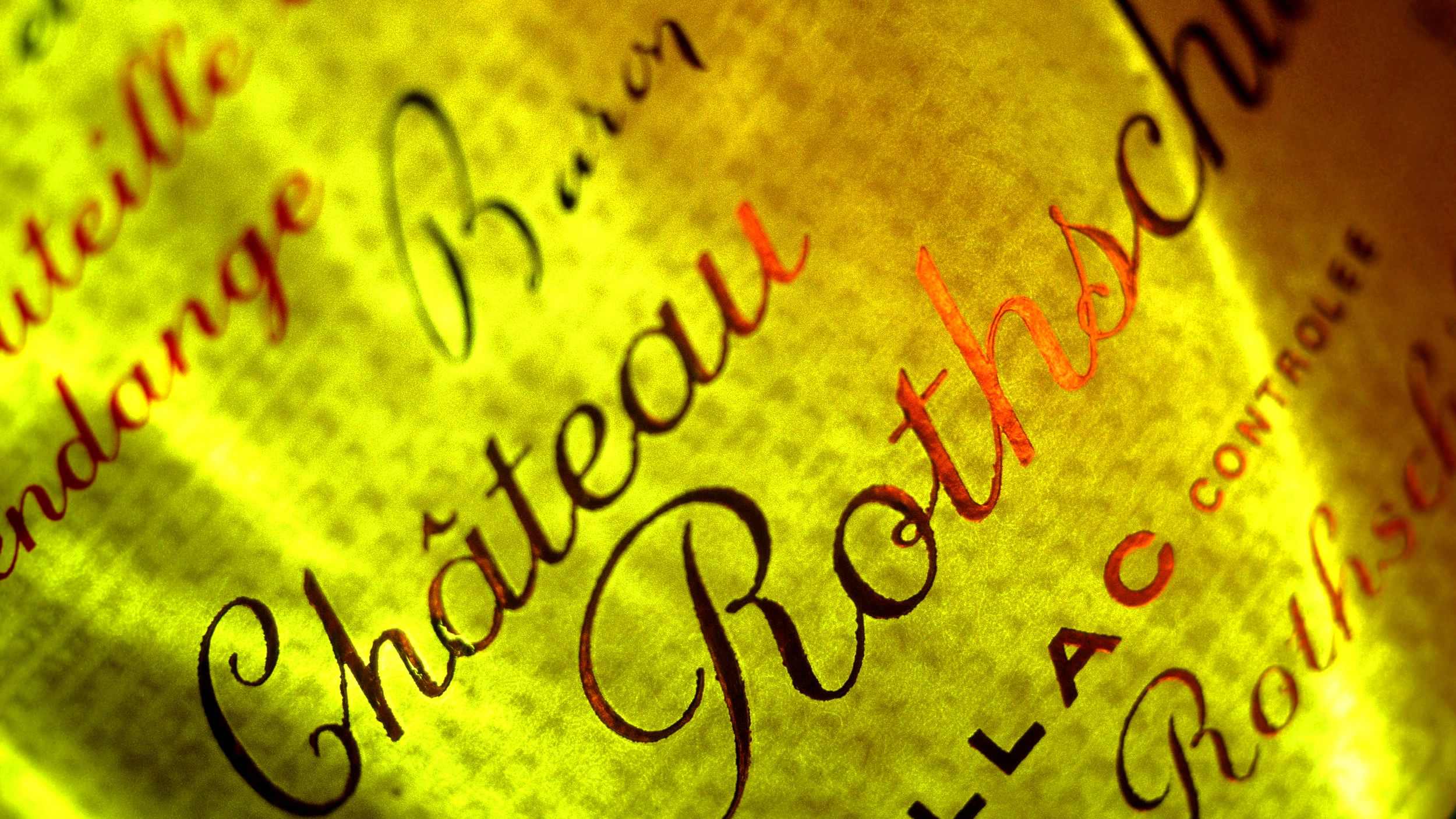
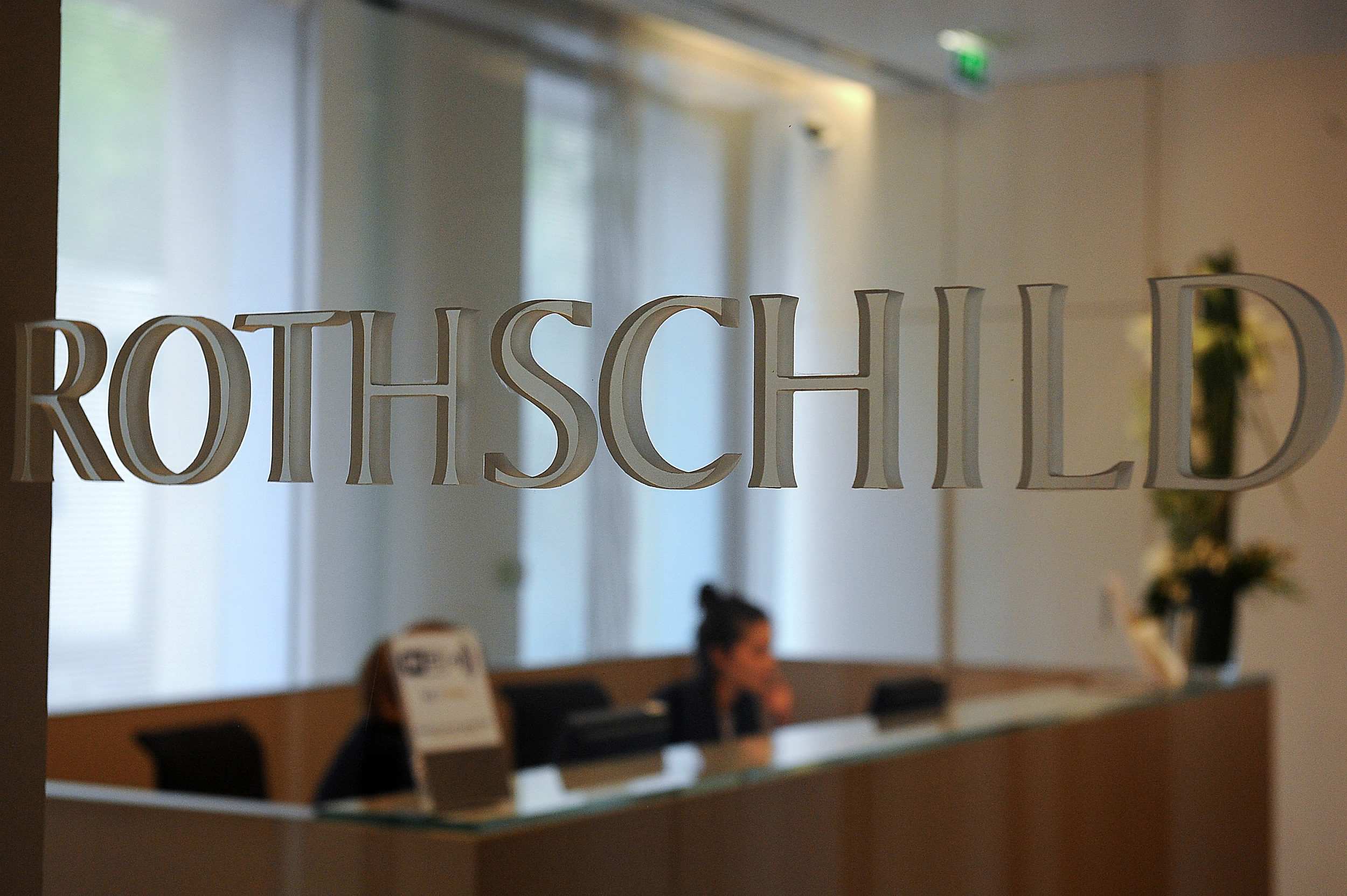
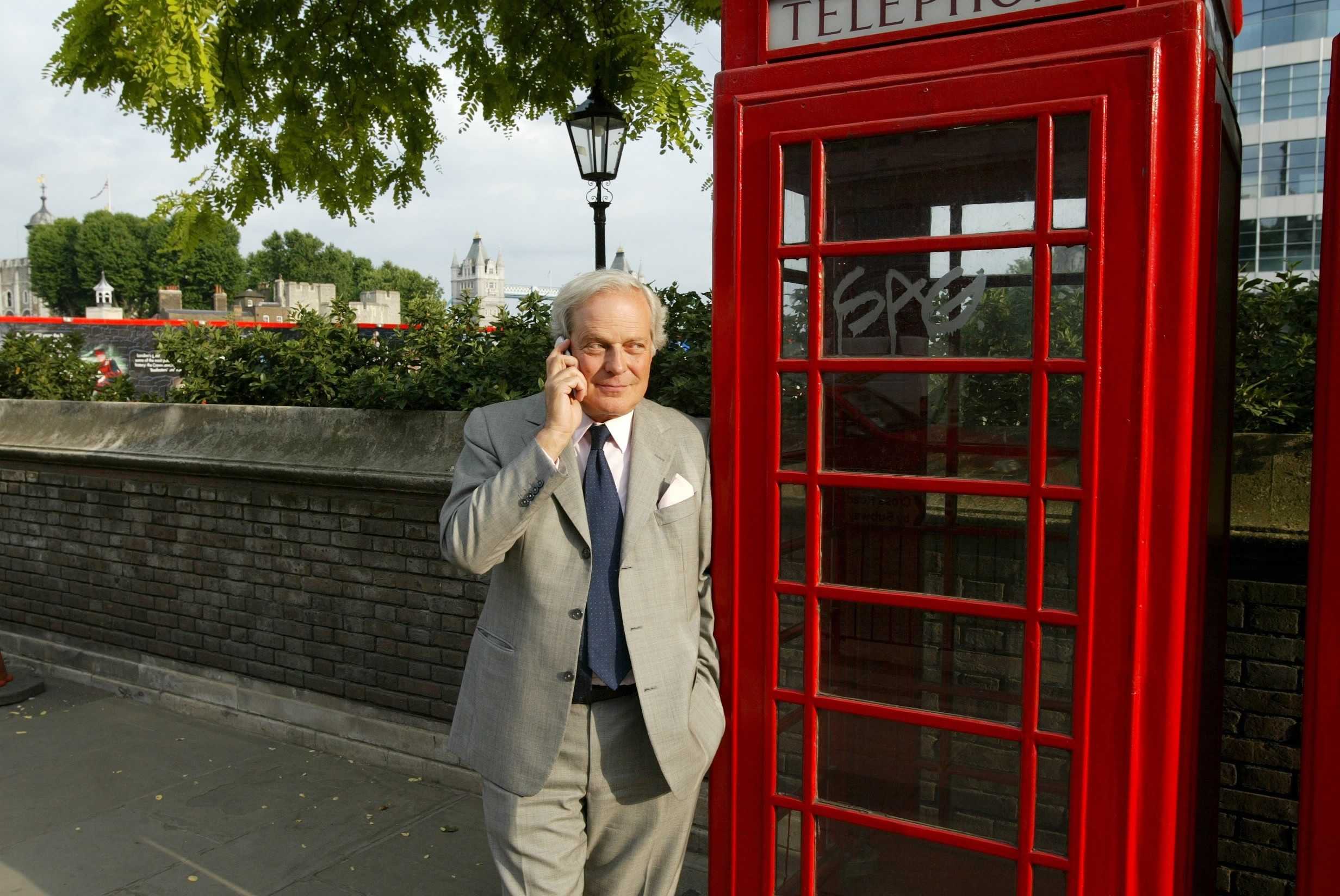
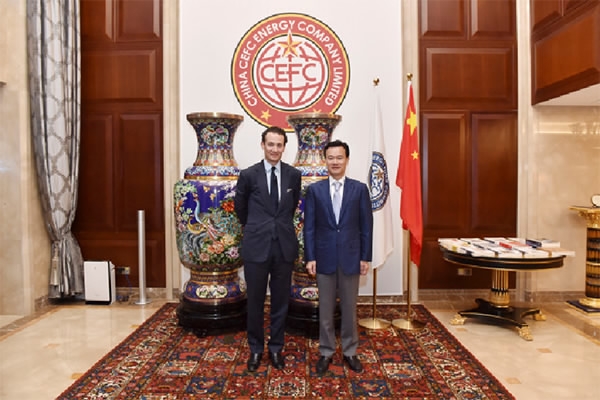
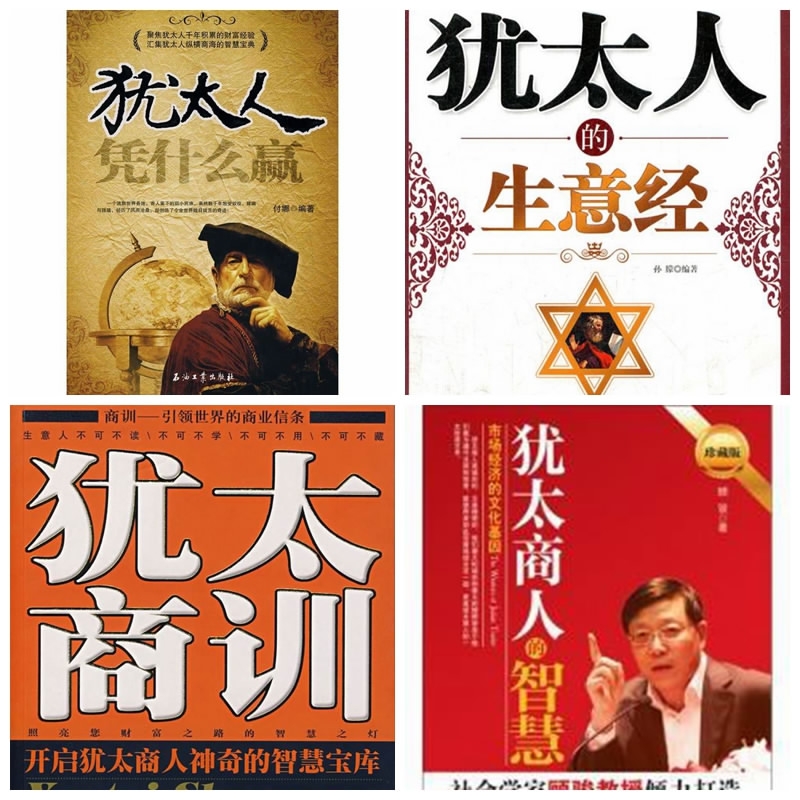
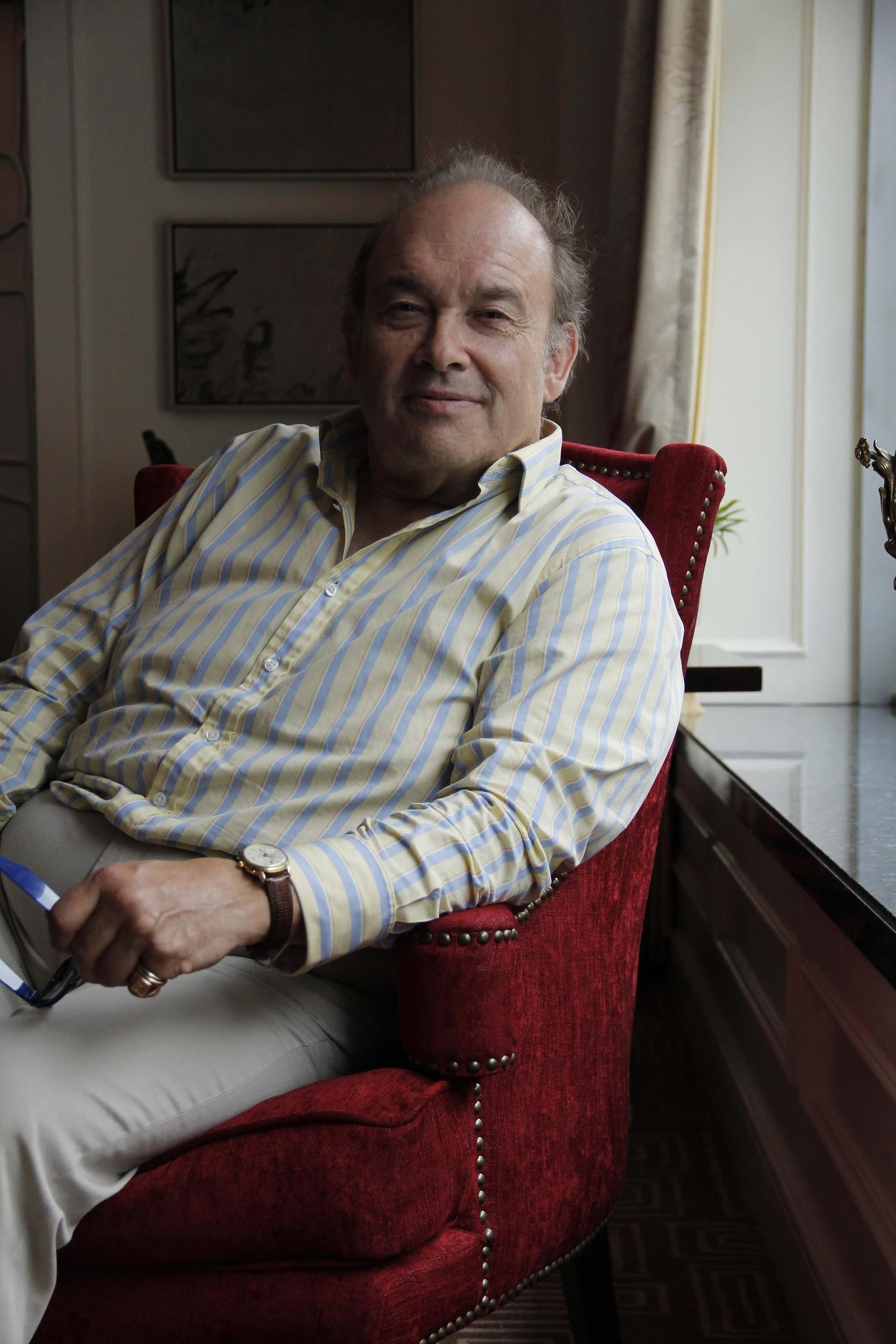

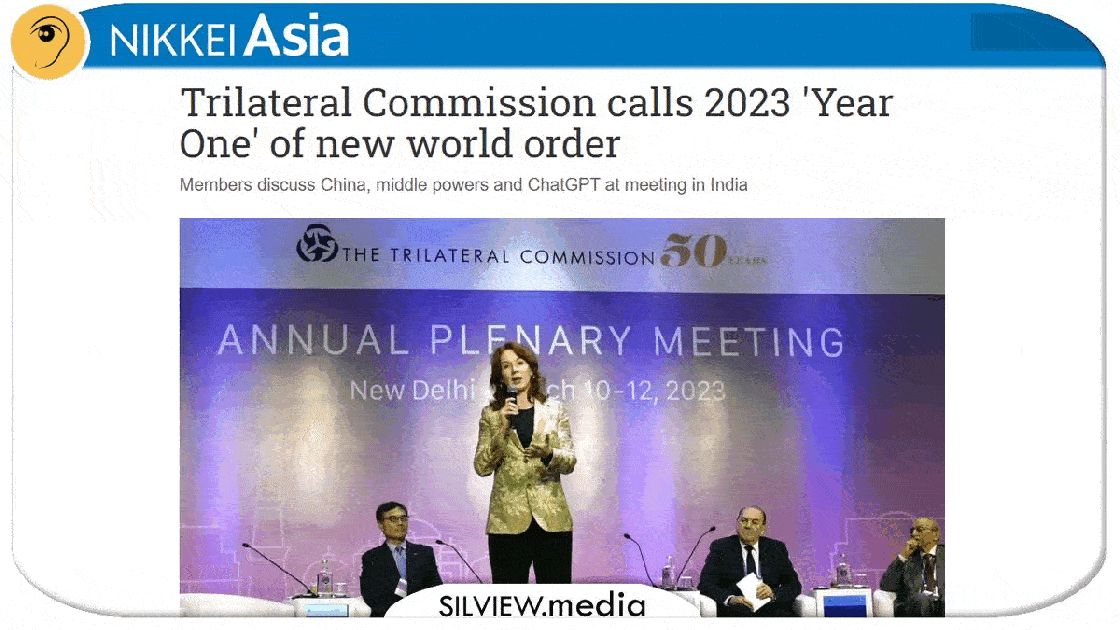

 Trilateral Commission members listen to Indian Minister of External Affairs Subrahmanyam Jaishankar in New Delhi on March 12. (Photo by Patrick Ishiyama)
Trilateral Commission members listen to Indian Minister of External Affairs Subrahmanyam Jaishankar in New Delhi on March 12. (Photo by Patrick Ishiyama) Wang Yi, China’s most senior diplomat, center, presides over a closed meeting between Iran, led by Ali Shamkhani, the secretary of Iran’s Supreme National Security Council, at right, and Saudi Arabia, led by Saudi national security adviser Musaad bin Mohammed al-Aiban, at left, in Beijing on March 11.(Xinhua via AP)
Wang Yi, China’s most senior diplomat, center, presides over a closed meeting between Iran, led by Ali Shamkhani, the secretary of Iran’s Supreme National Security Council, at right, and Saudi Arabia, led by Saudi national security adviser Musaad bin Mohammed al-Aiban, at left, in Beijing on March 11.(Xinhua via AP) Chinese Foreign Minister Qin Gang, left, speaks with his Indian counterpart Subrahmanyam Jaishankar during their meeting on the sidelines of the G-20 foreign ministers’ meeting in New Delhi, India on March 2. (India’s Ministry of External Affairs handout via Reuters)
Chinese Foreign Minister Qin Gang, left, speaks with his Indian counterpart Subrahmanyam Jaishankar during their meeting on the sidelines of the G-20 foreign ministers’ meeting in New Delhi, India on March 2. (India’s Ministry of External Affairs handout via Reuters)









